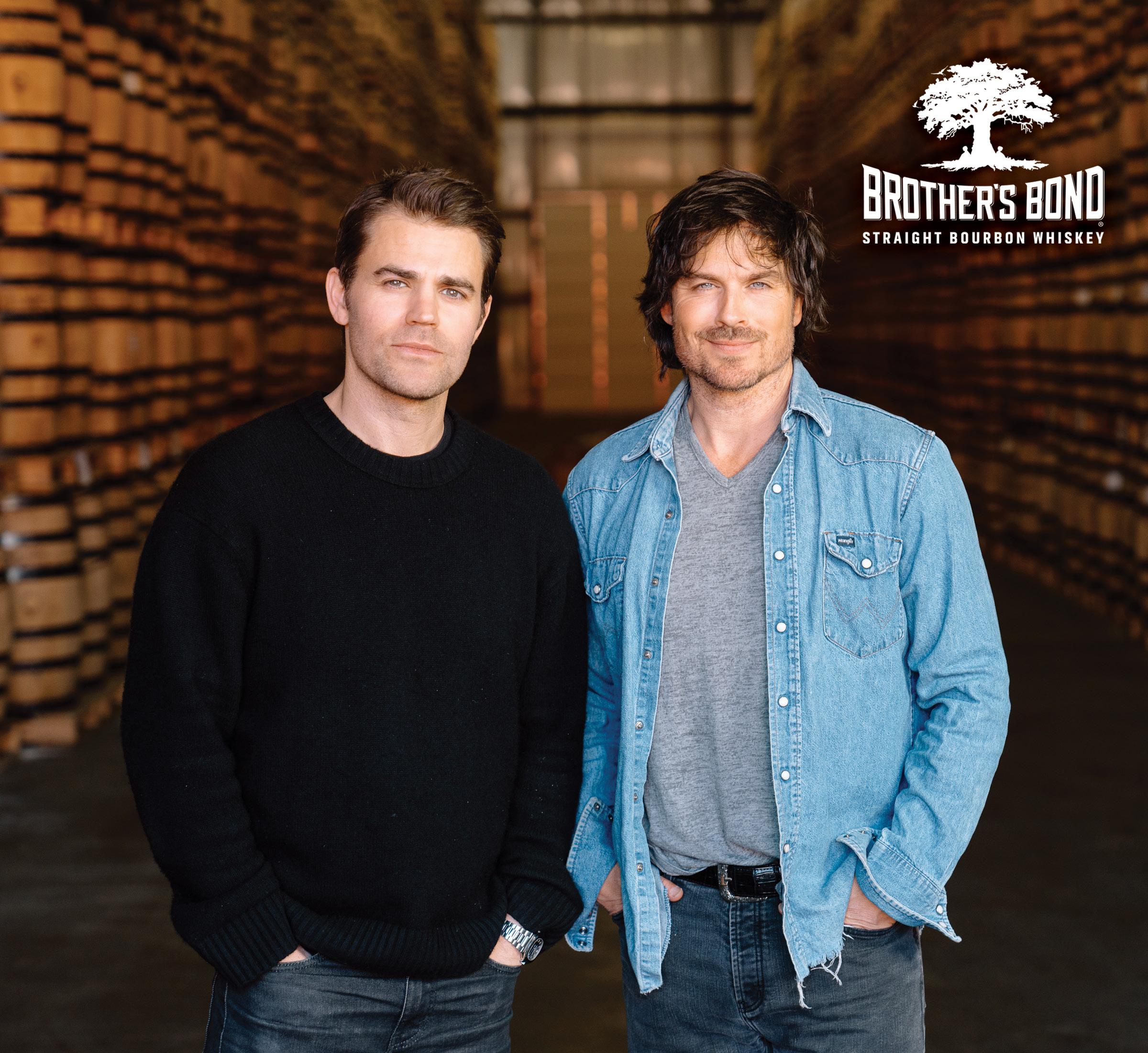


















The spirits and tobacco industries are navigating a period of profound transformation, where challenges are becoming catalysts for creative solutions. Innovation remains the common thread, with companies proving that authentic storytelling and consumer education drive lasting engagement.
Spirits companies like Brown-Forman, Diageo and Suntory are pushing boundaries through premium positioning and experiential retail. From Jack Daniel’s venture into super-premium aged statements to Don Julio’s cultural partnerships, Johnnie Walker’s continued dominance and Suntory’s expansion of travel retail exclusives with Hibiki and Bowmore, the focus has shifted decisively toward “less, but better,” a consumer mindset that’s driving premiumization across categories.
Yet the industry faces headwinds that demand strategic agility. Cognac houses confront unprecedented challenges as trade tensions with China – the largest export market by value for French brandy – create uncertainty. Final trade rulings will prove pivotal for producers who have built their growth strategies around this crucial market.
Meanwhile, the tobacco sector is witnessing its own evolution as manufacturers invest heavily in reduced-risk alternatives. BAT progresses toward 50 million smokeless product users by 2030, with 29 million already achieved. Monus, meanwhile, is focusing on a value-driven approach to its expansion across multiple continents.
Perhaps most intriguing is the emergence of the “sober-curious” movement, with 59% of Gen Z travelers planning to reduce alcohol intake. Retailers like Gebr. Heinemann are responding with expanded wellness portfolios, recognizing that modern travelers seek choice and control even in traditionally indulgent categories.
As our industry continues to evolve, the companies profiled in this issue demonstrate that success lies not in resisting change, but in anticipating it. The future belongs to those bold enough to redefine what premium means in an increasingly conscious world.

Kindest regards,

WENDY MORLEY Senior Editor wendy@gtrmag.com
Global Travel Retail Magazine (ISSN 0962-0699) is published seven times a year by Paramount Publishing Company Inc. The views expressed in this magazine do not necessarily reflect the views and opinions of the publisher or the editor. July 2025, Vol 37. No. 5. Printed in Canada. All rights reserved. Nothing may be reprinted in whole or in part without written permission from the publisher. Paramount Publishing Company Inc.
GLOBAL TRAVEL RETAIL MAGAZINE Tel: 1 905 821 3344 www.gtrmag.com
PUBLISHER Aijaz Khan aijaz@globalmarketingcom.ca
EDITORIAL DEPARTMENT
EDITOR-IN-CHIEF Hibah Noor hibah@gtrmag.com
DEPUTY EDITOR Laura Shirk laura@gtrmag.com
SENIOR EDITOR Wendy Morley wendy@gtrmag.com
SENIOR CORRESPONDENT Atoosa Ryanne Arfa atoosa@gtrmag.com
SENIOR WRITER Alison Farrington alison@gtrmag.com
ART DIRECTOR Jessica Hearn jessica@globalmarketingcom.ca
ADVISORY BOARD
Gary Leong Thomas Henningsen
CIRCULATION & SUBSCRIPTION
accounts@globalmarketingcom.ca



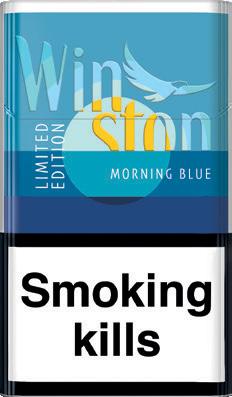



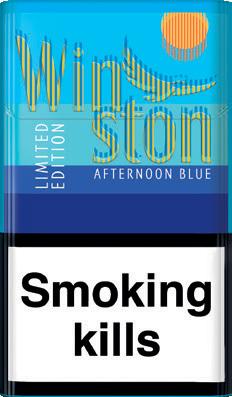
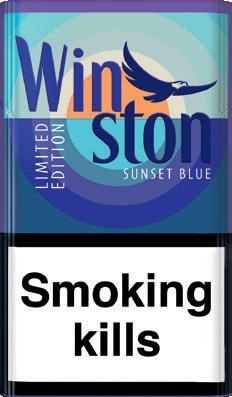




8 Blending with a purpose
In an exclusive interview with Ian Somerhalder and Vincent Hanna, Global Travel Retail Magazine sits down with two of the co-founders of Brother’s Bond Bourbon. Since its debut in 2021, it has become one of the fastest-growing ultra-premium bourbons in the United States and one of the most followed spirits brands on social media. It has now partnered with Gebr. Heinemann to enter travel retail
From agave appreciation to tequila takeovers and whiskey wins, the spirits market in global travel retail is evolving. As travelers arrive with higher expectations and shifting palates, brands are rethinking how they remain top shelf
Since the pandemic, travelers have been rethinking how wellness fits into their lifestyle, especially when it comes to alcohol and tobacco. Some are cutting back completely, while others choose non-alcoholic drinks and nicotine alternatives that better align with their health goals. The “sober-curious” mentality is gaining momentum, and travel retailers such as Gebr. Heinemann are responding
The tobacco industry is experiencing a period of significant evolution, from innovative reduced-risk products gaining traction globally to ongoing regulatory challenges and the emergence of new players expanding across regions

22 Cognac at a crossroads
Cognac, long considered a crown jewel of the travel retail spirits sector, is facing one of its most challenging periods in recent history. As 2025 progresses, the category is under pressure from escalating EU-China trade tensions and global economic instability
28 Decoding Gen Z
Gen Z is approaching spirits with priorities shaped by digital culture, shifting values and fluid brand loyalty. This generation’s palate calls for authenticity, social responsibility and meaningful engagement, pushing the industry to innovate
34 From top to tee
At the top of its game, Loch Lomond Group has continued to rapidly expand its travel retail footprint across key global regions, while championing a collaborative-led approach to growth. Central to its channel strategy, the brand will once again be partnering for The Open Championship in July
36 Beyond the bottle
Global Travel Retail Magazine speaks with representatives from across the wine category for an update on market trends and challenges, as well as the integration of experiential retail in the channel
46 150 years of craftsmanship
As Oettinger Davidoff AG enters its 150th anniversary year in 2025, Jean-Christophe Hollay, Head of Partner Markets & Duty Free EMEA & Americas reflects on the cigar house’s legacy and outlines how the company is advancing its next chapter across travel retail and beyond
48 Leading the charge
Mazaya’s Head of Travel Retail Rawan Elayyan discusses plans to amplify the shisha company’s differentiation through curated activations and exclusive product offerings, while detailing her vision for building lasting consumer connections and establishing Mazaya as a category leader
50 Ploom premieres
JTI’s next-generation heated tobacco device Ploom AURA launches exclusively in Japan travel retail, marking the global introduction of the product in the channel
52 Smoke-free journey
Philip Morris International is on a mission to accelerate the end of smoking. The new ZYN portfolio at Dubai International Airport is a “momentous step” in PMI GTR’s smoke-free journey
54 Adapting to new waves
Middle East-based ANDS – a specialist in alternative nicotine delivery systems – is diversifying its offer to mirror the growing demand in alternative nicotine products
56 Growing together
A three-day KTI Distributor Conference in Plovdiv, Bulgaria, underlined the company’s vision and strategic plans, with a focus on further development and expansion
60 Imperative exclusives
Growing a wider portfolio of GTR exclusives is a key focus for Suntory Global Spirits. Managing Director Global Travel Retail Ashish Gandham tells Global Travel Retail Magazine the innovation spotlight will shine on building global brand offers from House of Suntory, Bowmore and Maker's Mark for discerning travelers to discover
62 Portfolio power
Global Drinks Limited’s multi-brand strategy is paying dividends across Asia Pacific travel retail, with MISAKA whiskey leading the charge alongside expanding partnerships, supply chain growth and a diverse premium spirits portfolio targeting India’s surging demand through both airport and border retail channels
64 Rising uncertainty
Global Travel Retail Magazine hears from leading industry executives to learn more on the rising level of uncertainty that has entered the travel space as geopolitical tensions and looming tariffs continue to affect consumer confidence

In an exclusive interview with Ian Somerhalder and Vincent Hanna, Global Travel Retail Magazine sits down with two of the co-founders of Brother’s Bond Bourbon. Since its debut in 2021, it has become one of the fastest-growing ultra-premium bourbons in the United States and one of the most followed spirits brands on social media. It has now partnered with Gebr. Heinemann to enter travel retail
by LAURA SHIRK
Speaking on a video call ahead of its official partnership announcement with Gebr. Heinemann, you could keenly sense through the screen the long nights, countless blends, years of friendship and stories from around the kitchen sink that shaped what Brother’s Bond Bourbon is today. Since day one it has been a labor of love. It is not often that Global Travel Retail Magazine has the opportunity to speak openly with the founders of a spirits company — never mind ones that are fully involved
in the distilling process of a bourbon that is rooted in on-screen storytelling. Born from a genuine friendship that extended beyond the screen, Ian Somerhalder and Paul Wesley, costars on The Vampire Diaries, formed a real-life bond based on a love of bourbon. With one purpose: to bring people together through quality and connection, the two teamed up with Vincent Hanna, Co-founder & CEO of the company, to divide and conquer the world of whiskey.
Since its debut in 2021, Brother’s Bond Bourbon has become one of the fastestgrowing ultra-premium bourbons in the United States and one of the most followed spirits brands on social media. Taking on the role of self-taught Blending Master, it is clear that Somerhalder is curious by nature, understands the evolving preferences of the modern consumer and is passionate about the making of the product, as well as the brand’s triple bottom line: people, planet and profit. After more than one year
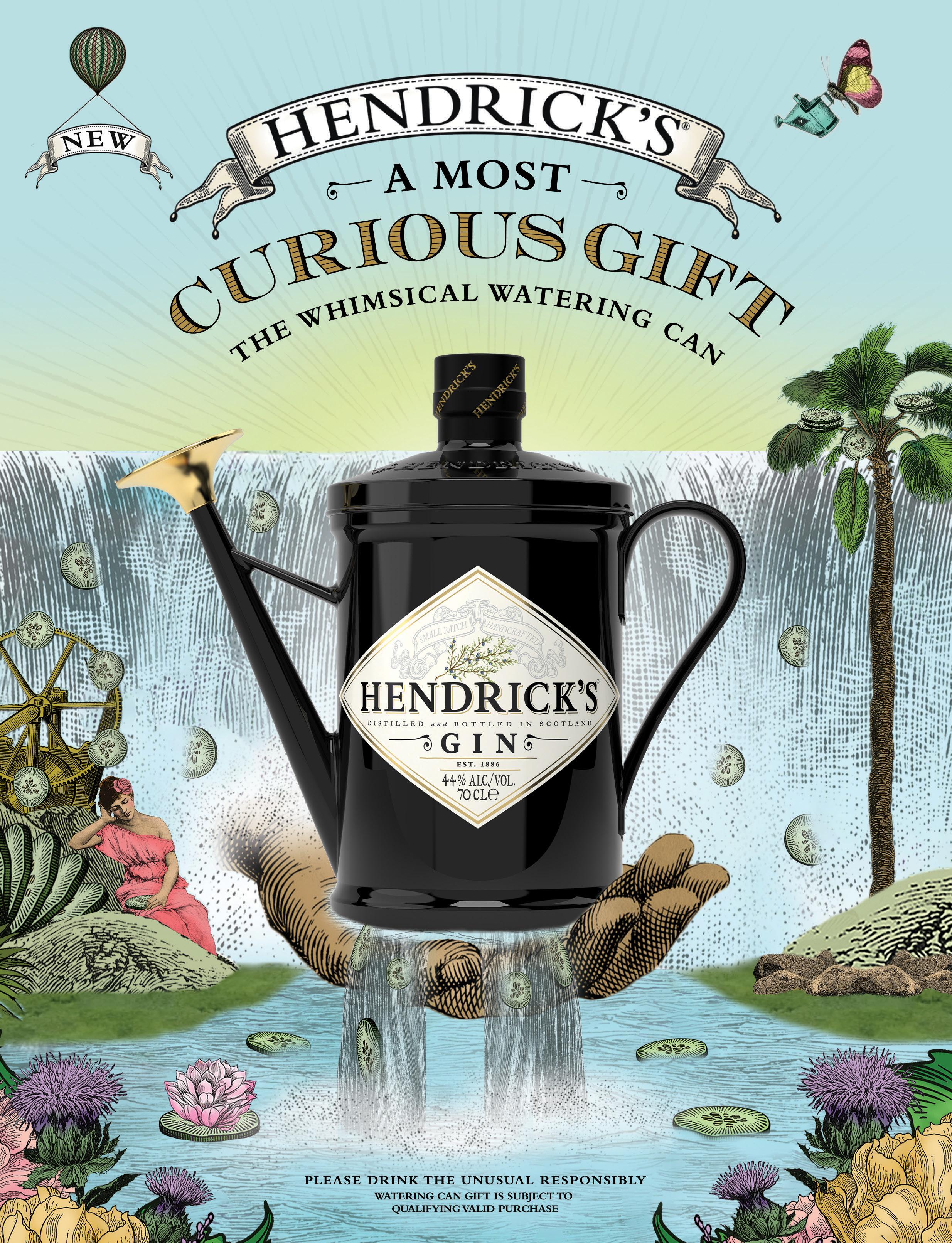
A look at the

of blending in his kitchen at home, together with Wesley, Somerhalder came up with the two core foundational tenets of their liquid: immediate approachability and complexity.
“Our expansion into global travel retail is a natural next step — not just a commercial move, but a strategic opportunity to foster deeper emotional connections. This channel offers us a unique space to share our story with international consumers, offering more than a product — offering a moment of meaning. Our goal is to create discovery-driven, authentic experiences that resonate with travelers seeking purpose, craft and sustainability,” explains Hanna. Having established itself as a credible whiskey in the U.S., Brother’s Bond
Bourbon is ready to connect with its following outside of the United States and excited about the potential of emerging markets in travel retail. Plus, who doesn’t love a taste of nostalgia? Literally.
Brother’s Bond Bourbon is set to launch in select European airports and on premium cruise lines later this year, following the start of its U.S. rollout. Described as smooth, complex and ideal for all occasions, the brand’s travel retail range will feature its flagship Straight Bourbon Whiskey, alongside more elevated offerings such as its 7-Year Bottled-in-Bond and American Blended Rye. Additionally, the award-winning
collection will include a limited-edition expression made with regeneratively grown grain.
According to the team, to ensure standout shelf presence, the company is introducing refined global packaging in 2025, combining modern aesthetics with storytelling cues. The company is also exploring channel exclusive formats and premium gifting bundles with the aim to elevate collectability and engage shoppers beyond the bottle.
When asked how Brother’s Bond Bourbon will leverage its unparalleled digital reach and the industry’s developing experiential retail trend, the company revealed plans to create seamless digital-to-shelf moments. On the agenda in travel retail: QR codes unlocking personalized video content, founder messages and mixology tips; in-store screens featuring exclusive behind-the-scenes footage and curated activations.
“By merging our social engagement with immersive in-store storytelling, we aim to convert interest into action — and turn the duty free shelf into a space of emotional connection and discovery,” says Hanna. “We’re also developing a global campaign tailored to the travel

In 2024,
Discover our flavourful alternatives to cigarettes with no smoke, no ash and smoke smell to match your every moment. For Trade Only. Not for Distribution to Consum ers.

*Winner ZYN: Best Nicotine (non-combustible) product.
These products are not risk free and provide nicotine, which is addictive Only for use by adults.
retail audience — one that blends digital storytelling, sustainable values and an elevated bourbon experience. We want travelers to discover not just a product, but a purpose, wherever their journey takes them.”
“Brother’s Bond Bourbon represents exactly the kind of brand we seek to bring into our portfolio. Premium, authentic, and with a strong emotional connection to consumers. Its rapid growth and compelling brand story make it a natural fit for our travel retail strategy, and we’re excited to offer it to our global customer base as of August,” comments Rüdiger Stelkens, Purchase Director Liquor, Tobacco, Confectionery & Food at Gebr. Heinemann.
Purpose-driven brand
On track to build the first truly regenerative spirits company in the world, Somerhalder says he is blending for equal sensory proportion — an absolute balance of harmony and flavor. Beyond the bottle, he is blending with the desire to make a difference. “We came out of the gate saying we are giving back to regenerative agriculture because we know that this is the future of food and agriculture and people don’t even know what it is,” explains Somerhalder. “We are now growing our own regenerative grains. We have hundreds of acres of unbelievable certified regenerative rye growing in Western Indiana.”
In 2024, Brother’s Bond Bourbon released its first bourbon made from regeneratively grown grain, setting the stage for future innovation rooted in environmental stewardship. In travel retail, the company will bring awareness to this aspect of the business through shelf signage, on-pack storytelling and digital content that explains both the “why” and “how” of regenerative agriculture. “Our aim is to inspire travelers to make conscious choices — and to show them that their pour can be part of a larger purpose,” adds Hanna.
On the topic of whiskey classification and exploration, Brother’s Bond
Describing its award-winning collection as smooth, complex and ideal for all occasions, Brother’s Bond Bourbon is committed to honoring tradition while also reimagining what bourbon can be

Bourbon is committed to honoring tradition while also reimagining what bourbon can be. “That means blending unique mash bills, experimenting with grain sources like regenerative crops and producing limited-run innovations that push boundaries while remaining approachable.
“Through micro-batch releases, barrel select programs and educational tastings, we’re giving consumers new reasons to explore the category — whether they’re seasoned connoisseurs or curious newcomers. We want bourbon to feel both familiar and exciting,” says Hanna.
Experience in a bottle
We also spoke at length about the different types of heightened emotions travelers often experience while at the airport. Whether travelers are feeling nervous to fly, excited to see someone or sad to
leave a destination, the components of a product — name, logo, artwork — call out to them. “The whole ethos of the brand is about sharing moments of intimacy, bringing people together,” says Somerhalder. This reflects the heart of travel retail.
Reminiscent of a Hollywood script, Somerhalder listed a series of real-life scenarios describing how a traveler might come across a bottle of Brother’s Bond Bourbon in duty free. “At the end of the day, it comes down to a person — a dad or a mom, a businessperson; someone who just had their heart broken or someone who just fell in love. Someone who just got the biggest job or someone who just lost one, standing with their bag or their briefcase in a store with chaos around them, holding a bottle and seeing or feeling something new,” he conveys. “It’s not a bottle of whiskey; it’s a bottle of experience.”





From agave appreciation to tequila takeovers and whiskey wins, the spirits market in global travel retail is evolving. As travelers arrive with higher expectations and shifting palates, brands are rethinking how they remain top shelf
by ATOOSA RYANNE ARFA
Experts forecast strong growth for the global spirits market in travel retail through 2025. The resurgence of international travel, combined with a consumer shift toward premium products, exclusivity, and experiences, have been setting the stage for a profitable year. Passenger traffic picked up pace in 2024 and continues to climb in 2025, driving healthy sales. In the meantime, shoppers are showing up with more defined tastes and a clear willingness to spend on what feels premium or different.
Travel retail shoppers are adopting a “less, but better” mindset, buying fewer, higher-quality spirits as personal treats or standout gifts. Distillers are responding by expanding portfolios with



premium expressions aimed at selective buyers.
Brown-Forman is leaning into the upper end of the whiskey spectrum by investing in exclusive releases, age-statement whiskies, and high-impact airport activations. “Our growth strategy for Jack Daniel’s centers around being a Tennessee whiskey, with Old No. 7 at the core,” says Laura Smith, Global Marketing Manager, GTR at BrownForman. “But increasingly, we’re shifting focus to the super-premium category and expanding our range to meet the evolving tastes of modern whiskey drinkers.”
Smith acknowledges that Jack Daniel’s has relied on core offerings and hasn’t historically played in the superpremium space. “That’s changing,” she
says. “We’re now seeing real traction at home in the US and now in Asia, where there’s significant room for growth.”
One of the brand’s major moves is reintroducing age-statement whiskey to the Jack Daniel’s GTR portfolio, marketing a milestone not reached in over a century. “This is the first time we’ve launched aged statement Tennessee whiskey internationally,” shares Smith. “It’s incredibly special, not just for us as a brand, but for the entire category.”
Stirred, shaken and surging Cocktail culture is gaining momentum in travel retail, with consumer preferences shifting toward spirits suited for mixed drinks. “60% of Americans prefer spirits or cocktails while on holiday,” says Andrew Cowan, Managing Direc-
tor of Diageo Travel Retail. “Educating consumers on serving suggestions, not just the bottle itself, is becoming increasingly commonplace.” As a result, brands are positioning their products as essential cocktail ingredients, not just standalone spirits.
This trend is also driving quiet but steady growth in Ready to Drink (RTD) and Ready to Serve (RTS) formats, though the segment remains relatively under the radar. “No major brand has pierced in Europe yet on this segment,” shares Thibault Touchais, Head of Category Management – Beverages at Lagardère Travel Retail, who notes that the company is still deciding whether to regroup these products into a dedicated category or place them alongside their base spirits.

The cocktail wave is also fueling tequila’s rise. “At the moment, Don Julio is the number one tequila in duty free,” Cowan shares, “thanks in part to the rise of tequila-based cocktails such as margaritas and palomas.” Lagardère is seeing similar momentum. “We significantly expanded our tequila range last year and gave it dedicated shelf space,” adds Touchais. He notes that while sales have doubled, tequila still represents a small share of overall volume.
Meanwhile, whiskey continues to perform. “Johnnie Walker Black Label remains the number one Scotch whisky in travel retail, a position it has held for

the past three years,” says Cowan. Bourbon is also gaining ground at Lagardère, particularly in the premium and craft segments. “It’s growing at the expense of single malt Scotch, leading us to reallocate shelf space between the two in certain shops,” says Touchais.
For Brown-Forman, variety remains a major strength. “We’re increasingly talking to customers about the breadth of the Jack Daniel’s range and how it offers different products for different needs and price points,” Smith says. The company has built a clear progression for consumers, starting with approachable Jack Daniel’s Tennessee flavors such
as Honey, Fire, and Apple to highertier options such as Gentleman Jack, the Bonded Series, and Single Barrel. The American Single Malt, launched recently, now expands the portfolio even further.
Other categories are also gaining momentum. Barry Geoghegan, Founder of Duty Free Global, notes growing interest in aged and tawny port along with premium burgundy wines. Gin also holds promise when supported by innovation. “Gunpowder Irish Gin with their new innovative flavor called Brazilian Pineapple is a prime example,” says Geoghegan.
Understanding today’s traveler requires nuance. “We carefully evaluate growing trends and what passenger profiles are looking for,” says Duty Free Global's Geoghegan. These details matter more than ever as regional dynamics shift. In 2025, Asia Pacific is expected to drive much of the category’s growth, fueled largely by the return of Chinese travelers. Known for their interest in luxury goods and premium spirits, their presence is anticipated to significantly lift sales. Bourbon is gaining traction in Europe and Asia, with high-end expressions seeing rising demand. And long popular in the US, agave-based spirits are expanding into Europe and Asia as awareness and interest in tequila and mezcal grow.
Understanding consumers goes beyond national or regional preferences. According to Geoghegan, how and where a product is marketed matters. “If the brand is more likely to be consumed on vacation, we position it in holiday destination travel retail stores such as Stanstead, Luton, and Gatwick,” he explains. “If it’s aimed at business travelers, we focus on Heathrow and other established Tier 1 airports.”

*Source: Nielsen Total US Universe 52 weeks ending 11/2/24

The travel retail channel has expanded beyond selling bottles to becoming a place for discovery, with consumers seeking products not available at home. This desire for novelty and urgency has paved the way for travel retail exclusive editions that help brands meet this demand.
“This is true for all categories in travel retail, but especially spirits,” Cowan notes, adding that exclusivity, memorability and local heritage matter deeply to global travelers. “You have the most discerning consumers in the world, as well as a very captive audience. This presents huge opportunities to build brands and get consumers excited about the spirits category, but you need to be able to demonstrate that they are getting something different from a shop at home.”
Brown-Forman’s Single Barrel 100 Proof, a bottled-in-bond expression matured in handcrafted oak barrels, stands out as a global travel retail exclusive and flagship product. As Smith explains, “We're focusing on top airport locations for brand activations to maximize visibility and bring this story to life.”
Still, Touchais warns on some of
the setbacks and difficulties with exclusives and limited editions. “Excusive editions are sought after by landlords, but they usually come at a premium,” he says, noting that travelers aren’t always willing to pay more. “The most flexible solution seems to remain exclusive sleeves or outer packaging,” he explains, adding that full exclusive editions take up shelf space and make sense for major international brands and high-traffic airports that can meet minimum production volumes.
Limited editions pose other challenges. “We use six-month planograms, which aren’t very flexible, so leftover stock is frequently a concern,” Touchais notes. Still, he acknowledges their value.
“They add energy to the assortment and usually interest passengers, especially when tied to brands with high reputations and desirability.” Touchais also explains that they perform best when supported by trained staff and dedicated, flexible brand spaces.
To reduce barriers for brands, Lagardère recently introduced the “Launchpad,” a permanent retail space for new product introductions. “It lightens the investment needed from suppliers at a time when marketing budgets are decreasing,” says Touchais.
Pouring on the action
Memorable activations continue to remain an important part of converting



casual browsers into loyal customers.
Cowan highlights Diageo’s recent partnership between Don Julio and cultural icon Peggy Gou. “By combining a limited-edition product with a cultural icon and hosting events at hotspot cities, we were able to drive excitement and visibility around the Don Julio brand.” He also points to the Singleton Gardens of Abundance travel retail exclusive launch, which used omnichannel tactics such as a Changi Airport pop-up and 3D anamorphic screens to showcase Singleton Malts’ flavor profiles.
Experience is central to every activation. “That can mean tastings, scent trials, personalization, gifting, concerts,
and more,” says Touchais. Lagardère favors activations with seasonal or cultural relevance, from Formula One tieins and Cannes Film Festival collaborations to end-of-year holiday themes like branded Christmas trees.
One of Brown-Forman’s standout initiatives is its ongoing Jack Daniel’s partnership with the McLaren Formula One team, continuing into 2025 with a limited-edition release timed to the F1 season. “We’re telling the partnership story in travel retail through activations in key race markets, especially the Middle East and Latin America, where F1 enthusiasm is booming,” says Smith. The activation schedule includes major
events in Abu Dhabi, Mexico, and São Paulo, following the brand’s recent presence in Miami.
This collaboration delivers strong global visibility for Jack Daniel’s.
“There are over a billion F1 fans worldwide,” Smith notes. “When we first started the partnership, McLaren was mid-table. Now they’re right at the front. More camera time, more brand exposure. We like to think Jack has a little influence there!”
As travel retail evolves, so too does the spirits category. Brands that raise the bar with quality, relevance and experience will be primed to leave a lasting pour.
The spirits category in travel retail is not without its challenges. The “T-word” continues to weigh on the sector, and Duty Free Global’s Geoghegan says the situation remains open-ended. “When it comes to tariffs, there is no clear pattern at this stage and it’s just a matter of waiting.”
At the same time, price polarization is reshaping the market. “We’re seeing growth either at the entry-level or in luxury,” says Lagardère’s Touchais. “The premiumization trend that carried growth these last years has peaked.”
Shifting attitudes around health and wellness are also impacting consumption, with more travelers choosing to moderate their alcohol intake. Geoghegan points to Duty Free Global’s response: a partnership with no-alcohol brand Caleño. “They offer a fantastic non-alcoholic gin and a spiced rum alternative,” he says.
Looking ahead, the forecast is cautious. “Our overall five-year forecast is less optimistic than before, mainly due to the overall economic situation and rising awareness of the health impact of drinking, specifically among the younger generation,” Touchais adds.
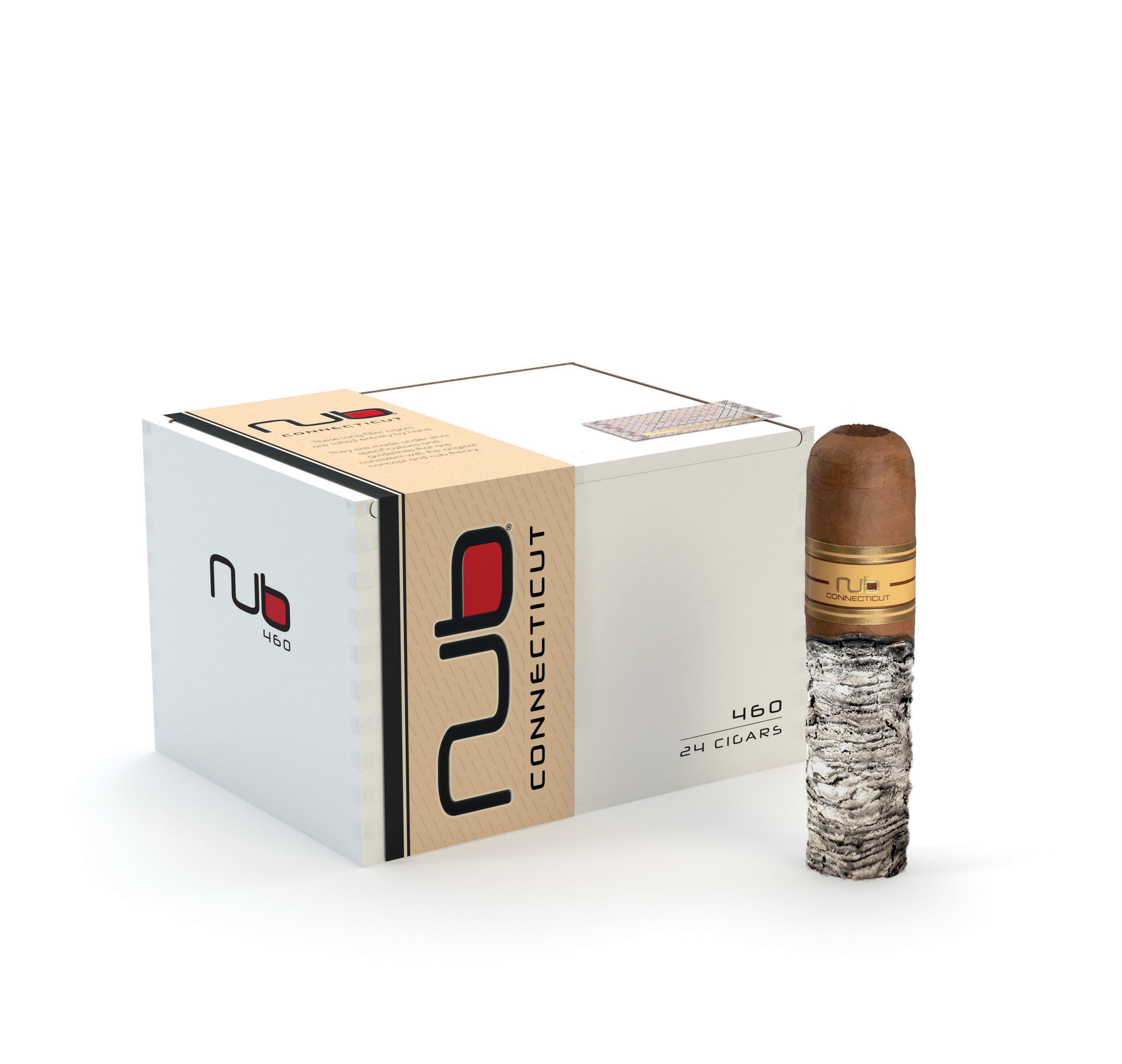
Cognac, long considered a crown jewel of the travel retail spirits sector, is facing one of its most challenging periods in recent history. As 2025 progresses, the category is under pressure from escalating EU-China trade tensions and global economic instability
by ATOOSA RYANNE ARFA

Once an emblem of French luxury and a consistent performer in duty free, the cognac category has been facing recent challenges, prompting players to reassess strategies amid escalating geopolitical tension.
What’s driving the disruption? China’s “anti-dumping” measures on European brandy have caused provisional duties as high as 39%, and French cognac houses, which account for the majority of brandy exports to China, have been hit hardest. These tariffs came into effect in late 2024, following China’s anti-dumping investigation starting in January of that year. France sees the move as retaliatory, as it came after the EU imposed tariffs on Chinese electric vehicles.
The Chinese market remains crucial for French brandy, with imports valued at approximately US$1.7 billion. It is the largest export market by value and
second-largest by volume after the US.
To avoid permanent tariffs, France’s leading cognac producers submitted pricing proposals to Chinese authorities, outlining minimum import prices reportedly ranging from US$20 per liter for entry-level expressions to US$300 for ultra-premiums.
In July, China’s Ministry of Commerce (MOFCOM) issued its final ruling, imposing permanent anti-dumping duties on most EU brandy imports, with rates between 27.7% and 34.9%. The move poses a significant financial burden for most cognac producers. However, those pricing proposals proved effective for some. 34 European Union producers, including major players Pernod Ricard, Rémy Cointreau and Moët Hennessy, have reportedly secured exemptions and will adhere to their agreed minimum price thresholds instead of paying the full duties. This will ease pressure on their operations
In July, China imposed permanent anti-dumping duties of 27.7% to 34.9% on most EU brandy imports, but major players such as Pernod Ricard, Rémy Cointreau and Moët Hennessy secured exemptions by agreeing to minimum price commitments, easing some impact on their businesses
and help soften the broader impact on the sector.
France has pledged to defend its cognac industry, citing both cultural and economic significance. While Beijing ultimately enforced duties, its willingness to grant exemptions to key producers suggests that they want to maintain pressure while keeping trade channels partially open – especially as broader tensions between China and the U.S. continue to escalate.
In a recent press release, Rémy Cointreau had reported an 18% drop in organic revenue company-wide (not specific for travel retail) for fiscal 2024-25, with its cognac division down 21.9% as tariffs in China and elsewhere weighed on sales. The company cut costs to protect margins and abandoned its long-term sales targets through 2030. It also named Francke Marilly as its new














CEO in June, replacing Eric Vallat. Pernod Ricard faced similar pressures. Its Q3 FY2025 earnings results show a 31% drop in global travel retail sales, with a 17% decline year-to-date, mainly due to China suspending duty free status for cognac. The drop contributed to a 3% decline in overall revenue, with potential tariff-related costs reaching US$215 million. Still, Pernod reported growth in Europe and strong performance in the Americas and cruise channels. In May, it appointed FrançoisXavier Morizot, formerly head of its champagne division, to lead its cognac portfolio, replacing Philippe Neusch.
While China’s finalized anti-dumping duties have provided some relief for these players and will offer a hopeful upswing, demand uncertainty and pricing pressures will continue to remain challenges.
Innovation amid uncertainty
Amidst this shifting landscape, brands
have been investing in new approaches to engage consumers and preserve their luxury appeal. For example, Moët Hennessy has been leveraging digital and experiential channels to keep cognac relevant for luxury travelers.
In Asia, its partnership with Alipay created a connected shopper journey, where travelers at luxury hotels in Singapore and landmark sites in Macau received personalized invitations to Hennessy boutiques featuring curated tastings of locally inspired food pairings. This campaign culminated in a striking pop-up at Singapore’s Changi Airport, reinforcing the Hennessy brand’s presence in a major travel hub while collecting data to shape its long-term consumer approach.
Meanwhile, Hennessy’s connection with consumers was further strengthened by its “Spirit of Travel” campaign, tying its heritage to iconic destinations, using local architectural elements to enhance cultural relevance and celebrate
its enduring appeal. And at the House of Hennessy in Hainan’s Haitang Bay, the brand has launched its “Senses of Hennessy” installation, a multi-sensory journey guiding visitors through cognac production using sight, sound, smell and touch. This immersive space combines storytelling with personalized service and will soon add an exclusive very important customer (VIC) trunk to elevate the retail experience further.
China’s July decision confirmed that tariffs on EU brandy imports will take permanent effect, though exemptions for some major producers offer partial relief. As trade tensions continue to cast a shadow over the category, brands and retailers will need to adjust pricing, promotions and supply chains accordingly. Continued innovation and flexibility will be necessary for sustaining relevance in the region.

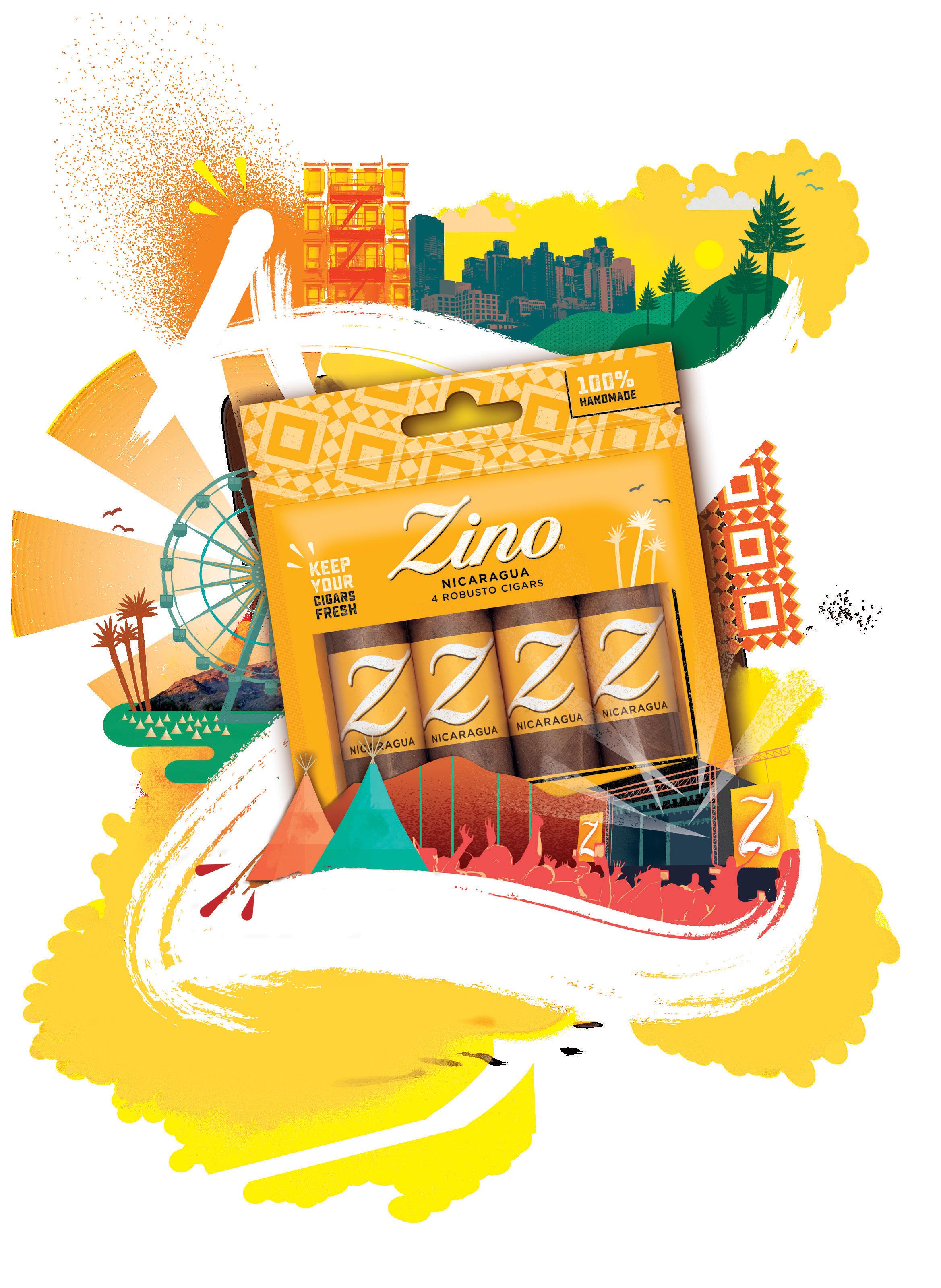
Although interest in lowand no-alcohol options is rising, consistent demand in travel retail is still emerging. Direct sampling remains one of the most effective ways to convert curiosity into purchase

Since the pandemic, travelers have been rethinking how wellness fits into their lifestyle, especially when it comes to alcohol and tobacco. Some are cutting back completely, while others choose non-alcoholic drinks and nicotine alternatives that better align with their health goals. The “sober-curious” mentality is gaining momentum, and travel retailers such as Gebr. Heinemann are responding
by ATOOSA RYANNE ARFA
Recent m1nd-set data shows growing interest in the “sober-curious” lifestyle. 59% of Gen Z travelers plan to reduce alcohol intake in 2024, a 43% increase from last year. Their motivations align with wellness goals: 65% want to improve physical health, 58% want to focus on mental wellbeing and 44% seek cost savings, highlighting how
financial wellness also factors into their choices. Mocktails lead substitutes, with 36% choosing non-alcoholic mixed drinks when flying or shopping.
Retailers such as Gebr. Heinemann are integrating wellness into their category strategies by broadening their product mix and challenging traditional definitions of indulgence in travel retail. This includes no- and low-alcohol
options, next-generation tobacco alternatives and an expanded range of wellness-oriented products, including healthy snacking.
Gebr. Heinemann’s mantra to “turn travel time into valuable time” guides curation of categories that meet the needs of health-conscious, experience-


driven travelers. “We bring a long-term view and entrepreneurial agility to category development,” says Niels Altmann, Head of Buying for Tobacco.
Heinemann treats alternative nicotine products as a category-wide transformation, offering heated tobacco, vapes and oral nicotine pouches – also known as Next Generation Products (NGPs) – for younger travelers seeking discreet, tech-enabled and flavorful options without traditional tobacco’s stigma or health risks.
Manuel Schilling, Head of Buying for Spirits, notes that demand for low- and no-alcohol beverages remains stronger in social settings such as bars and curated events than airport retail, but that Heinemann is still preparing for rising interest. “While we haven’t yet seen a significant shift in demand within travel retail, we continue to ensure that our assortment reflects broader consumer trends,” he explains.
Where wellness-driven momentum
shows up depends on category and location. For nicotine alternatives, Frankfurt and Vienna are standout hubs. “NGPs are outperforming expectations in these markets, confirming travel retail’s role as a platform for discovery and trial,” says Altmann. On the spirits side, the Nordic region leads globally in demand for lowand no-alcohol products. “This trend is shaping our category planning and assortment strategy as we continuously track and adapt to regional preferences,” adds Schilling.
The new buzz
Heinemann positions discovery as the gateway to wellness-driven change, centering its strategy on in-store engagement and sensory experiences that promote exploration.
“We feature branded category zones, staffed engagement tables and interactive merchandising designed to demystify NGPs,” explains Altmann. “Our experience shows that educa-
tion at the point of sale significantly lifts engagement. It’s less about selling a product, and more about offering a moment of discovery.” That sense of discovery matters for travelers curious about NGPs but unsure about how they function or how they fit into routines or health goals.
Schilling reinforces this approach, pointing to the effectiveness of the “liquid to lips” model within the spirits category, which includes sampling, tastings, and brand experiences. “These activations can generate strong initial interest, but maintaining momentum afterward remains a challenge,” admits Schilling. Heinemann tackles this challenge by collaborating with global brands pushing category boundaries. “These collaborations are grounded in transparency, reliability and mutual commitment, cornerstones of our company philosophy,” shares Altmann.
Recent spirits partnerships include William Grant & Sons’ Atopia 0.5% and Diageo’s Tanqueray 0.0%, products that gained traction in domestic markets and now are piloting within travel retail. “While there is curiosity around low- and no-alcohol products, sustained demand in travel retail is still developing,” Schilling says. “Again, we’ve seen that activations involving direct sampling are key to driving interest.”
The wellness story goes beyond the mocktail glass or vape pen. Travelers across the board are making more intentional choices about what they inhale, sip and snack on. In response, Heinemann is broadening its overall wellness portfolio to include functional snacks and sustainable products, reflecting a broader shift in how consumers balance indulgence and restraint in today’s era.
“Our long-term view is shaped by a broader shift that travel retail must respond to consumers who want choice, control and reduced-risk moments, even in traditionally indulgent categories,” concludes Altmann.

Gen Z is approaching spirits with priorities shaped by digital culture, shifting values and fluid brand loyalty. This generation’s palate calls for authenticity, social responsibility and meaningful engagement, pushing the industry to innovate
by ATOOSA RYANNE ARFA
Gen Z is rewriting the travel retail spirits playbook, guided by peer influence and aesthetics and often deciding on impulse. The challenge for brands and retailers: how do you show up and sell to a generation that rejects traditional rules?
Recent m1nd-set data offers insight. Gen Z values price most, with 60% buying on promotion and an average spend of US$70, below the US$84 overall average. But price is only part of the picture: 14% say packaging drives purchases, and 11% are swayed by friends. Only 60% are influenced by staff, compared to 72% overall. Nearly one-third make
unplanned purchases, often at the airport or in-store.
Industry leaders such as ARI, Pernod Ricard GTR and Quintessential Brands respond by meeting Gen Z where they are, balancing connection with tangible results.
Pouring into Gen Z preferences
Gen Z lives online, where influence moves fast. “It’s essential to engage with them as early as we can in their travel journey,” says Shane O’Sullivan, Global Buying Manager at ARI. The retailer leans into TikTok and Instagram with content such as recipes or viral trends. “It’s about keeping the category current
and showing different usages for products,” he adds.
“This generation is extremely digital-savvy and thinks digital-first,” says Oliver Storrie, Managing Director at Quintessential Brands. “If they have a good experience with our brand, they will let the world know. But if they have a negative experience, they’ll be even louder.” Quintessential taps into consumer trends through gamification, competitions and geotargeted campaigns. The company also leverages third-party partnerships to drive buzz around popular products, such as its Kir Royal ready-to-serve cocktails, launched with Avolta in more than 100 airport stores as part of an Emily in Paris tie-in with Paramount Pictures.
Rae Gibson, Brand Director at Pernod Ricard GTR, says digital culture shapes both how Gen Z lives and how they shop. She points to projects such as Absolut Gift, a travel retail first with Heinemann Duty Free. The activation

lets travelers personalize Absolut Vodka
Original bottles by scanning a QR code, then co-creating a custom message with up to five people using photos, emojis or voice notes. The recipient then unlocks the message through augmented reality.
That said, the spirits category faces growing pressure as Gen Z’s views on wellness shift. In 2024, 59% of Gen Z travelers said they planned to cut back on alcohol, up 43% from the previous year, according to m1nd-set. The main drivers: physical health (65%), mental wellbeing (58%), and saving money (44%).
Gibson also notes category limitations as a challenge. “The liquor category has certain restrictions around aggressively targeting Gen Z travelers, as not all of them sit within legal drinking age,” she says.
To address these challenges, key players are leaning into research. ARI recently completed its Future Customer Initiative; an in-depth project aimed at
pinpointing both near- and long-term engagement opportunities. “This was an extensive piece of work we undertook to reformulate our customer segmentation and identify the opportunity spaces to engage with passengers,” says O’Sullivan. ARI’s strategy is now tailored to the specific customer profile of each location, including Gen Z. “We know through our research that Gen Z passengers value authenticity and seek brands with compelling stories, traditional production methods and high-quality ingredients.”
Innovation on tap
Innovation fuels Gen Z engagement through new flavors, formats, limited editions and digital perks. Readyto-drink (RTD) cocktails, no- and low-alcohol options and liqueurs are in rising demand. “RTDs are a long-term US trend going global,” says Gibson, with vodka leading, followed by tequila and whiskey mixes.

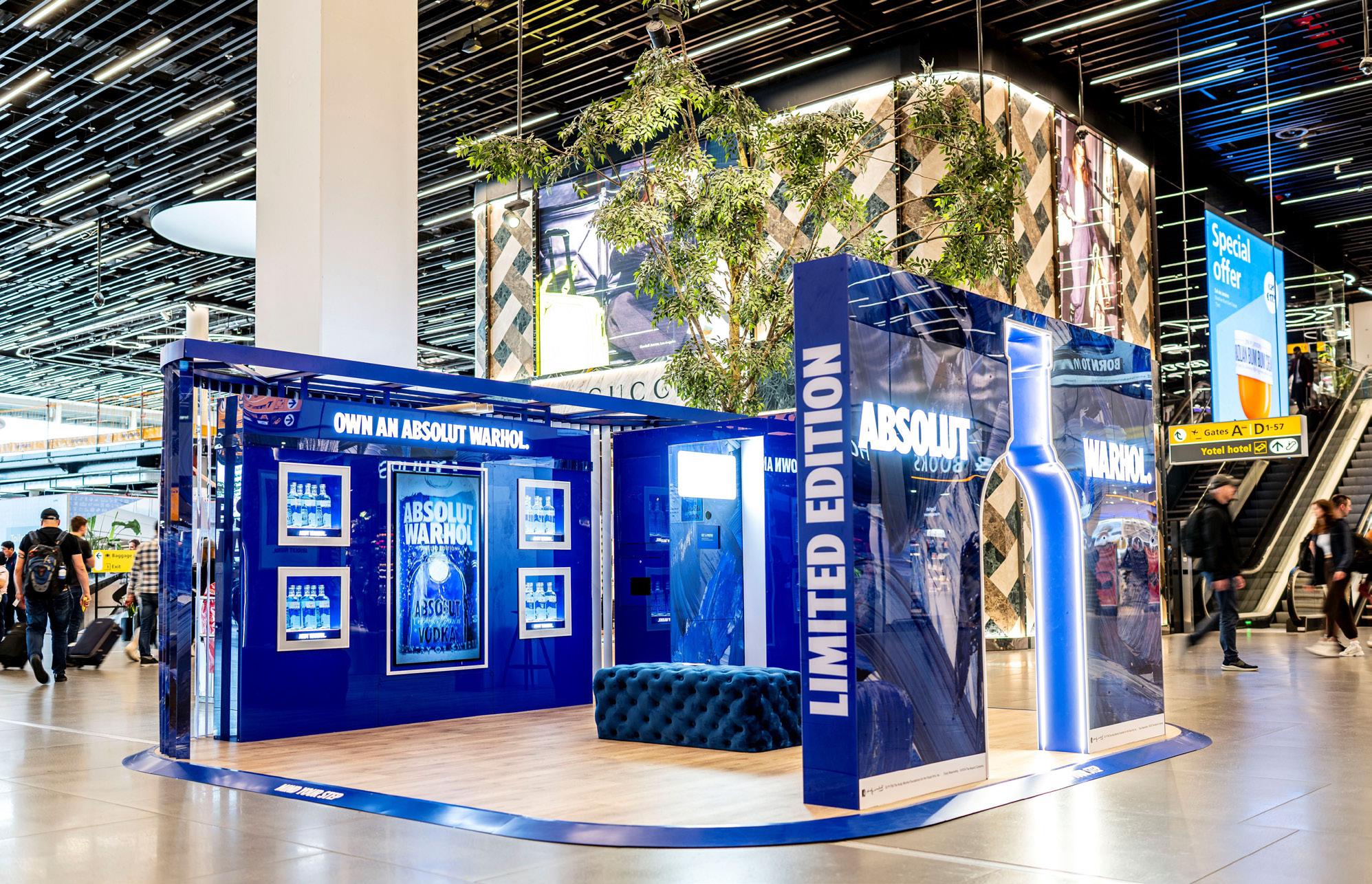
leverage design collaborations
Limited editions grab attention through design collaborations spanning culture, music, fashion, and flavors. For example, Pernod Ricard GTR’s Absolut x Warhol partnership featured a striking blue bottle inspired by a rediscovered Andy Warhol painting. The campaign combined pop-ups, 3D airport media and influencer content, initially targeting millennials but resonating stronger with Gen Z, according to Gibson.
When it comes to categories, white spirits dominate Gen Z travel retail, especially vodka. “Gen Z buys twice as much vodka as the average traveler,” says Gibson, who adds that Absolut leads as the number one vodka globally, backed by innovation and its inclusive “Born to Mix” ethos and mantra.
Tequila is gaining momentum but remains underdeveloped in travel retail versus domestic markets. “It’s an ideal category for premiumization,” Gibson notes, highlighting strong response to super-premium Altos Tequila and the
European expansion of ultra-premium Código 1530 Tequila. While the US leads sales, EMEA, APAC and GIBU show the strongest growth forecasts. Agave spirits purchases among Gen Z are also twice as high, prompting further investment from Pernod Ricard GTR.
Gen Z’s adventurous palate fuels interest in flavored and novel spirits.
ARI’s O’Sullivan points to brands such as Dead Man’s Fingers rum and honey whiskey liqueurs such as Tullamore Dew Honey, which add playfulness to the category.
Gin also resonates. “Opihr Oriental Spiced Gin connects consumers to the regions where we source botanicals, making it one of the fastest-growing premium gins,” Quintessential Brands’ Storrie says, adding that its narrative of travel fits naturally within the travel retail space. Educational digital marketing on Greenall’s Gin is also resonating, highlighting its heritage and quality.



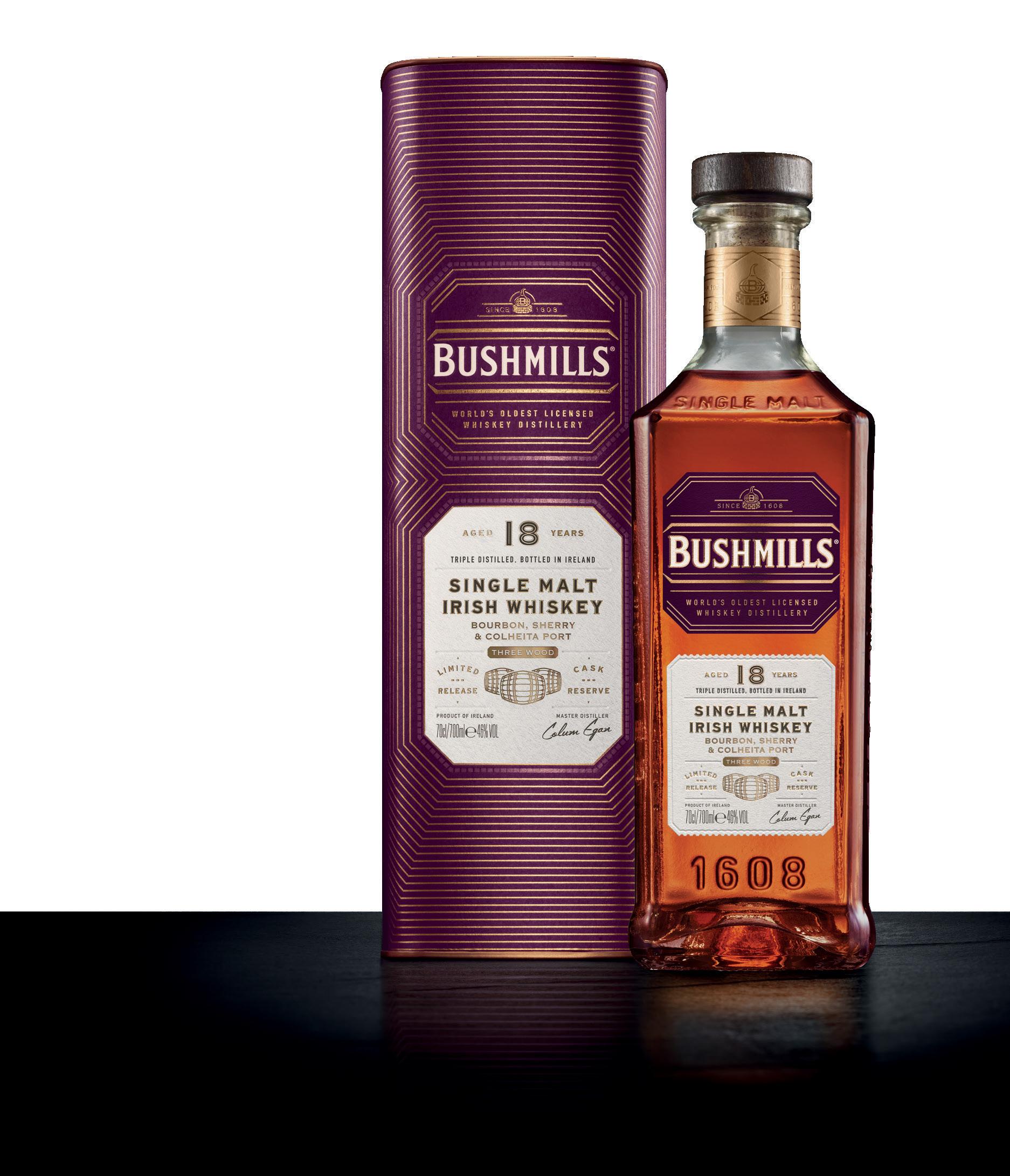
Driving sales today means going beyond the shelf. Immersive, experience-led retail, often referred to as “retailtainment,” is proving essential, particularly when it comes to younger shoppers.
“Conversion can be a challenge with this particular demographic,” says O’Sullivan. “Retailtainment is essential and something we do incredibly well at ARI.” A core strategy is “liquid to lips,” or putting product directly into consumers’ hands, which adds to the overall travel retail theater. “It’s fundamental for the spirits category, and is particularly important for local and new products,” adds O’Sullivan. “We know that Gen Z passengers want this sort of engagement.”
ARI has brought this approach to life through seasonal activations such as World Cocktail Day and World Whiskey Day, which includes tastings, product demos, whiskey ambassador insights and value-led promotions. “We take a very bespoke approach across each of our locations, ensuring that our range and assortment is adapted to the passenger demographic,” explains O’Sullivan.
“Travel retail exclusive and first-tomarket launches add an air of exclusivity to the retail experience that Gen Z
passengers love,” O’Sullivan adds. “We have brilliant partnerships with our brands and often work with them as a launchpad for new products or to trial new concepts.”
One standout example was “Arrive Like a Local” a digital campaign created in collaboration with Pernod Ricard GTR. The activation connected with travelers across multiple touchpoints. “It’s about creating memorable, engaging and localized experiences,” shares O’Sullivan.
In 2024, Pernod Ricard GTR upgraded the omnichannel campaign and rolled it out to over 36 airports worldwide as “Jameson Passport,” powered by AI learning and Visa payment technology. “The incorporation of Web3 technology not only enabled seamless engagement, but also allowed us to debut interactive features such as virtual token collection, augmented reality and gamification,” says Gibson, adding that offering a digital gift-withpurchase (GWP) in multiple airport locations aligned perfectly with their strategic objectives and gave consumers something of value they don't have to physically carry.
Pernod Ricard GTR also brought retailtainment beyond the airport in a

campaign for Chivas Regal, launched in partnership with Avolta and Manchester United FC. “It aligned with our mutual objective of targeting incremental travel retail shoppers and simultaneously increasing footfall and conversion,” says Gibson. Shoppers who purchased Chivas Regal at World Duty Free could scan their Red by Dufry membership for a chance to win tickets to a Manchester United vs. Arsenal match, using in-store QR codes, app-based integration and targeted emails.
For Gen Z, sustainability is the baseline. “Social issues matter to this generation, so we need to be authentic in everything we do and when we engage them,” notes Storrie. “They have an inclusive approach to the community, which we also need to be aware of in our various campaigns.”
One example Storrie shares is Quintessential Brands’ Greenall’s Gin, which uses a 94% paperboard bottle, thereby cutting weight, carbon footprint, and water usage. “With every sip of your G&T, you’re not only tasting something good, you’re doing something good,” says Storrie. The bottle’s carbon footprint is up to 75% lower than glass, water use is reduced dramatically, and its recyclable liner separates easily for optimal recycling and sorting. The brand also partners with Ecologi to plant trees in reforestation areas, extending its environmental impact.
Pernod Ricard GTR’s Future of Packaging team also pushes waste reduction, from modular pop-ups and lighter packaging to digital gifts, while local partnerships and Gen Z influencers boost authenticity. “We aim for responsibility at every step, from grain to glass,” says Gibson.
Looking ahead, this generation wants meaning, discovery and a reason to raise a glass with purpose. The future of spirits is being stirred, not served straight, and the ones paying attention now are best positioned to keep the next round going.
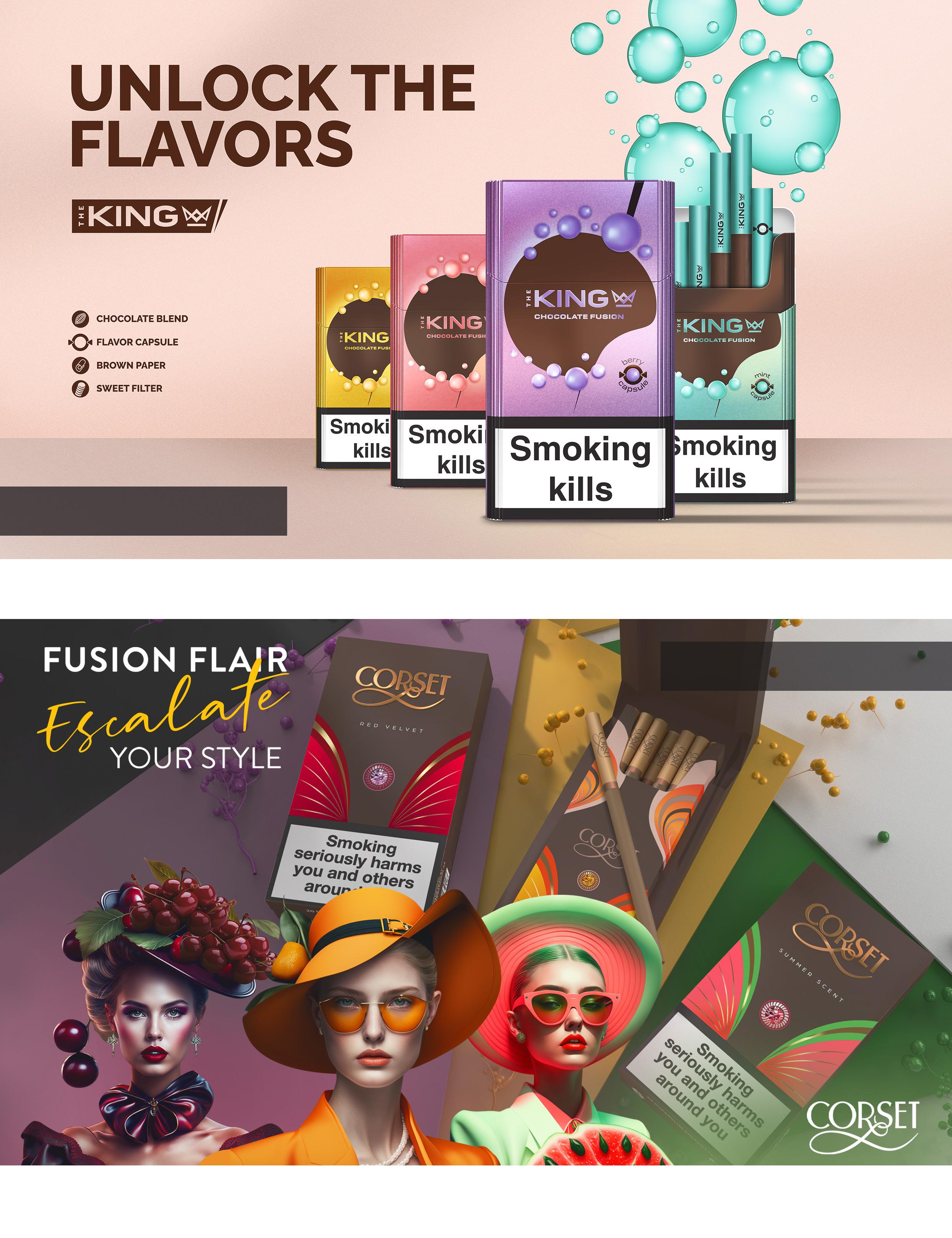
According to Luke Maga at Loch Lomond Group, Echoes from the Past has received a strong initial response, reflecting both its rarity and the emotional connection it evokes among collectors and connoisseurs
At the top of its game,
Loch
Lomond Group has continued to rapidly expand its travel retail footprint across key global regions, while championing a collaborative-led approach to growth. Central to its channel strategy, the brand will once again be partnering for The Open Championship in July

Aby LAURA SHIRK
s consumer preferences continue to evolve in travel retail, Loch Lomond Group remains committed to the channel and offering a broad, deep and diverse portfolio, says Luke Maga, Group Managing Director – Global Travel Retail at the company. This is the case not only within whiskey, but also across adjacent categories. According to Maga, Loch Lomond’s strategy is built on agility, insight and partnership. At its core is a clear and common understanding: consumers are the key to brand success. With this in mind, it is believed that complacency is not an option. “By staying consumer-focused, flexible and forward-thinking, we ensure our portfo-
lio remains both relevant and rewarding for shoppers and stakeholders alike,” he adds.
Over the last 12 months, the group has continued to rapidly expand its travel retail footprint across key global regions including the Americas, Asia and Europe. Specifically, its progress in Europe has been supported by a stronger distribution platform, increased brand awareness and growing consumer demand for its portfolio.
“Our approach to growth focuses on both reach and relevance. We work closely with our retail and distribution partners to develop aligned strategies
that deliver mutual value. This includes offering an award-winning assortment tailored to diverse market ensuring a premium and distinctive portfolio that resonates with global travelers, strengthening visibility and accessibility in hightraffic travel retail hubs.
“This collaborative, insight-led approach has positioned Loch Lomond as a highly relevant and desirable brand within the global travel retail landscape. We work with dynamic, solutionfocused partners who share our growth ambitions and bring a local perspective to each market,” explains Maga.
The team is said to rely on datadriven insights to tailor its offerings and actively monitor global and regional
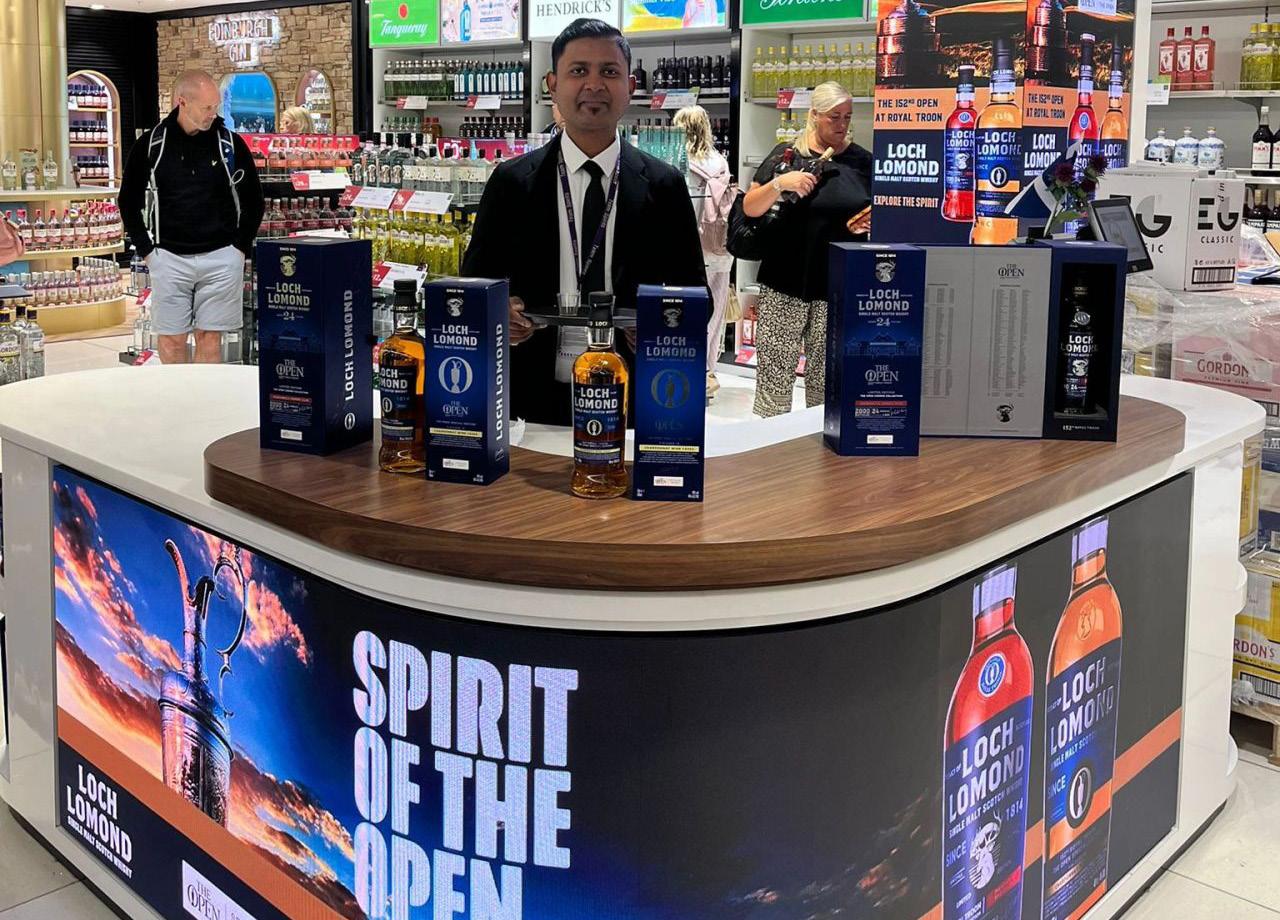

trends, allowing it to pivot to meet emerging consumer demands and stay ahead of shifting tastes, whether in line with flavor profiles, age statements or packaging innovation.
Premium positioning and unique storytelling
Recently launched at TFWA Asia Pacific in May, Littlemill’s Echoes from the Past celebrates the legacy of Scotland’s oldest licensed distillery, which shut down in 1994 and was later destroyed by fire. Loch Lomond was fortunate to save some of the original casks, which are still maturing in its warehouses across Scotland. A travel retail exclusive, Echoes from the Past is a four-part series
drawn from one of the surviving casks, with only 50 bottles released per year; it comes with a 50-ml miniature and collectable decanter.
“Echoes from the Past has received a strong initial response, reflecting both its rarity and the emotional connection it evokes among collectors and connoisseurs. It tells a poignant story of heritage, craftsmanship and the preservation of a lost distillery through exceptional liquid,” says Maga.
Speaking about the range of products available on the shop floor, it is evident that Loch Lomond’s portfolio is not only diverse, but also deeply rooted in whiskey heritage. The Loch Lomond Remarkable Stills Collection continues
to see strong momentum, providing a unique expression of the group’s innovative still design and distillation style. As the only whiskey from Campbeltown, Scotland, available in global travel retail, Glen Scotia offers passengers a unique regional choice and retailers the opportunity to present a truly global whiskey selection, Maga notes. “Together, these collections strengthen our premium positioning in the channel and reinforce our commitment to offering exclusivity, authenticity and storytelling,” he states.
Loch Lomond is gearing up for The Open Championship – the world’s biggest golf major – this summer. Central to its travel retail strategy, this partnership remains a key pillar for the group, which is known to release three limited editions each year based on the event’s location. The tournament will take place in place in Portrush, Northern Ireland, this year (July 17-20); among The Open editions, Loch Lomond is set to present a 22-Year-Old Course Edition aged in Spanish oak on-site and at select travel retail locations.
As shared by Maga, the company’s travel retail focus in the coming year(s) will expand further outside of the United Kingdom into and across Spain, Asia Pacific, the Americas and the Middle East with activations supporting key retailers in these markets.
“In 2025, we have significantly expanded our activation footprint with a series of promotions leading up to The Open. We will run promotions across key locations Edinburgh, Glasgow and Heathrow Terminal 2 over June and July. Excitingly the first-time presence in World Duty Free Belfast, where visitors will be welcomed with the Loch Lomond portfolio, including The Open editions,” he says. “New listings have been confirmed at ARI Dublin, Singapore Changi Airport and Sydney Airport. These activations aim to drive awareness and engagement for the Loch Lomond portfolio while celebrating our ongoing partnership with The Open.”

Global Travel Retail Magazine speaks with representatives from across the wine category for an update on market trends and challenges, as well as the integration of experiential retail in the channel
by LAURA SHIRK
Described by experts as dynamic, complex and challenging, the wine category in travel retail is one of the fastest growing categories in the channel. Competition is said to be fierce, especially now with new tariff regulations looming. According to Cathy Rolland, Global Travel Retail Manager at Osborne, most wineproducing countries tend to prioritize their own national wines, which leaves limited shelf space for international selections. “When stores do offer a broader assortment from multiple origins, Spanish wines often remain a niche category,” she says. “Currently,
European countries like France and Italy dominate the category, benefiting from both strong consumer recognition and strategic positioning by their national players.”
Pier Giuseppe Torresani, Export and Travel Retail Sales Director at Masi Agricola, believes a proper wine assortment adds credibility and prestige to the overall alcohol offering. Since its market share in travel retail is much lower than in domestic markets, Torresani points out that the wine category has significant potential. “Consumers are present; they are simply looking for the right offer. Retailers who have invested in the
category are reporting excellent results. Sales trends vary significantly from region to region,” he explains. Addressing extremes in the market, Torresani notes as a result of its arrival shops, ferries and border stores, Northern Europe is the largest market with a purchasing pattern focused on renowned brands and price advantages. Whereas, travel retail markets in the Middle East and Asia Pacific offer high-value fine wines that are particularly appealing to international travelers.
Although the wine category is facing an aging consumer base and a continued decline in consumption driven by financial concerns and changing social habits, Bruno Teixeira, Global Travel Retail Director at Familia Torres, says there is opportunity to meet the demand of the next generation of “more involved


With a winemaking history that spans over 250 years,
and conscious wine drinkers.”
“For wine and spirits, we aim to recruit younger generations as many mature markets become increasingly reliant on older ones,” explains Teixeira. “Experienced drinkers are loyal, but less involved with the category, and lower spending than younger drinkers. Millennial consumers tend to be more highly involved in wine and attracted to brands, storytelling and experiences that reflect their lifestyles.”
Keeping in mind the current economic landscape, Familia Torres plans to continue optimizing its portfolio to create value and provide a reason to buy based primarily on a quality model. A timeless trust has been routinely exhibited between the final consumer and its collection. “The increase in the cost of living is causing a certain downward trend, especially in the lower price levels or standard range, which is an impor-
tant category for our company, so we keep a close eye on it together with our partners,” he adds.
Right now, the company is working on producing limited edition wines that come from unique vineyards and historic estates, as well as wines that are made with ancestral varieties. Following a decades-long project to recover the winemaking heritage of Catalonia in Spain, more than 50 ancestral varieties have been rediscovered such as Querol, Forcada and Gonfaus. This initiative will be included in the company’s differentiation strategy for global travel retail, with the purpose of creating unique experiences for travelers.
“We also rely on the unique in-store shopping experience as a key tool to engage with the traveling consumer. We want to ensure that consumers take away with them a part of the brand's story, enabling them to pass on our
values,” says Teixeira.
As one of the largest wine groups in Italy, family-owned Herita Marzotto Wine Estates strives to achieve quality above all else. While relatively recent to travel retail (compared to the domestic channel), Herita Marzotto brands have gained popularity due to their presence on a global level at top restaurants and venues. One of the first companies to invest in Prosecco with a vision of international success for the product, the group remains a category innovator. It most recently launched the Santa Margherita Prosecco Valdobbiadene Superiore DOCG. This sparkling Prosecco is Herita Marzotto’s latest limited edition and travel retail exclusive.
“We are firm believers in experiential retail and, as a wine company, we work closely with our partners to ensure
all the necessary tools are available to create memorable experiences for our traveling customers. We are putting the finishing touches to Santa Margherita branded ‘promo islands’ which are due to feature in several duty free stores worldwide during the coming months,” explains Giacomo Marzotto, Export & Travel Retail Director at Herita Marzotto Wine Estates.
The main objective of this initiative is to strengthen the presence and recognition of the Santa Margherita brand in a travel retail context, as well as support the new release by establishing a direct dialogue with the consumer. “The initiative has been carefully designed to activate a true customer journey, engaging and guiding shoppers through an experiential path, thanks to in-store tastings and a narrative [used] to spark interest, drive engagement, share our wine culture and support sell-out,” he continues.


Following the announcement of its partnership with Duty Free Global, international wine group AdVini hosted a memorable tasting at TFWA Singapore in May. The session, entitled “Revealing the terroir wines: Bordeaux versus Rhône,” featured a comparative vertical tasting of L’Oratoire des Papes versus Château Patache d’Aux and offered fascinating insight into the distinct terroirs and winemaking styles of the two prestigious French wine regions.
The partnership is focused on specific markets, such as Asia and other areas in global travel retail that AdVini does not currently cover. It includes AdVini’s global brands from Bordeaux and Rhône Valley, as well as other regions in the South of France, such as Provence, Languedoc-Roussillon and main brands from AdVini’s South African wine offer.
Founded in 1872, the group is driven by family spirit, entrepreneurship and people-focused shareholders. According to the team, AdVini is committed to the sustainability of its activities and strives daily to reduce its impact, both in the vineyard, where it is leading an agroecological transition, as well as at production sites, where careful attention is given to water use, energy efficiency and green design techniques in winemaking.

Herita Marzotto Wine Estates recently launched the Santa Margherita Prosecco Valdobbiadene Superiore DOCG. This sparkling Prosecco is Herita Marzotto’s latest limited edition and travel retail exclusive

Speaking about experiential retail in the duty free environment, Rolland notes what truly resonates with passengers is the ability to create an emotional connection. The Osborne team works to transport travelers beyond the airport, even if only for a few minutes. “With the help of our brand ambassadors, we invite them to close their eyes and imagine themselves walking through our vineyards in Rioja or our centuriesold cellars in Jerez. We want them to take with them not just a bottle, but a piece of our story—our passion for terroir, craftsmanship and authenticity,” she says.
Although Osborne’s wine portfolio is not the widest, it is rooted in some of Spain’s most iconic appellations, as well as thoughtfully curated and recognized for its outstanding quality. Its Viña Monty Graciano was named one of the “Top 50 Wines in the World” by the Decanter World Wine Awards in 2024.
Considered more demanding than ever before, traveling consumers not only look for special prices and promotions,
but also want to participate in exciting shopping experiences. In some cases, this can reflect a broad offer, which can be intimidating for consumers. Masi Agricola’s goal in travel retail is to make the brand visible, and where possible, to provide consumers with the opportunity to sample products. “Our role is to educate them and help them understand the key distinctive characteristics of our
land and our wines. We can only do this through guided tastings,” says Torresani. “It is a long-term effort that we pursue consistently in domestic markets and replicate in travel retail whenever laws permit and operators are willing to collaborate.”
With a winemaking history that spans over 250 years, the winery has proudly led the success of Amarone and the Valpolicella Ripasso category, two of the most renowned Italian wine styles. According to Torresani, wine enthusiasts recognize the value of the name and often choose Masi Agricola in travel retail because they have already experienced the brand in fine restaurants at home or while on holiday.
In partnership with Heinemann, Masi Agricola recently introduced limited edition packaging for its premium rosé Rosa dei Masi, developed exclusively for the Norwegian travel retail market. Showcasing the colors of the Norwegian flag, this dedicated packaging celebrates Norway’s Constitution Day and caters to growing traveler demand for distinctive products that evoke sense of place and occasion. Torresani comments, “This initiative exemplifies how tailored exclusives can enrich the retail mix and differentiate the in-store travel retail experience.”







The tobacco industry is experiencing a period of significant evolution, from innovative reducedrisk products gaining traction globally to ongoing regulatory challenges and the emergence of new players expanding across regions
by WENDY MORLEY
Featuring rechargeable technology and replaceable pods, BAT’s Vuse Go Reload 1000 reduces waste consumption compared to disposable devices
Growth projections for the global duty free market of over US$600 billion by 2034 present opportunities for tobacco manufacturers willing to adapt to evolving consumer preferences and regulatory requirements. Success in this environment increasingly depends on balancing innovation with compliance, tradition with transformation, and global strategies with local market adaptation.
Manufacturers reflect broader trends toward premiumization and innovation, with traditional cigarettes funding research and development of reduced-risk alternatives, while digital technologies and consumer engagement innovations are becoming increasingly important tools for brands to educate
consumers and provide product information before purchase.
Building a smokeless future
BAT’s GTR division plays a crucial role in the company’s vision to reach 50 million adult consumers using smokeless products by 2030. Andy Hrstic, Cluster General Manager GTR & China at BAT, reports strong progress toward this target, with over 29 million adult consumers using BAT’s smokeless products globally as of 2024.
“At BAT, we have a clear purpose to build A Better Tomorrow by reducing the health impact of our business,” Hrstic says. The company invests over £300 million (US$408.25 million) annually in research and development (R&D)

of smokeless products, supported by eight innovation centers worldwide and over 1,600 R&D specialists. With a footprint covering over 600 locations, GTR is a key part of offering BAT’s multicategory range of smokeless products to adult consumers globally.
The VELO tobacco-free nicotine pouch brand experienced substantial growth in 2024, supported by a bold rebrand in July that introduced the “VELO Weirdly Wonderful” platform with vivid, modern visuals and simplified product design.
“We are seeing real appetite from both adult consumers and our business partners in travel retail for smokeless products like VELO, and we expect this trend to continue in

2025,” Hrstic states. Products like VELO offer a format particularly suited to the travel environment. Hrstic expects consumer preference will evolve along these lines, supported by strong ongoing sales of traditional cigarettes to adult consumers.
The VELO rebrand incorporates digital product information and prepurchase familiarity across touchpoints, with QR-linked tutorials and interactive narratives particularly effective in popup retail environments.
BAT also launched the glo hyper Pro, an innovative heated tobacco product, across various travel retail locations in 2024, demonstrating strong performance globally. “We know that a onesize-fits-all approach does not work in a channel as diverse and dynamic as travel retail,” Hrstic explains.
The company’s sustainability initiatives extend to travel retail operations, including the 2024 launch of VELO variants certified by the International
Sustainability and Carbon Certification for using bio-plastic or Post-Consumer Resin plastic through a mass-balance approach. BAT continues working toward its goal of being net zero across its value chain by 2050.
Global expansion
Monus, Serbia’s largest independent tobacco company and part of INVEJ Group, has expanded its footprint in the Americas with the introduction of the Floyd brand in duty free border shops in the US and Mexico.
Tatjana Agrez, General Manager at Monus, reports continued growth across multiple markets. “Monus’ story of success continues, with new listings in Istanbul, Sabiha Gökçen and Antalya Airports; Monus Slims and Fast brands in Air Serbia inflight offer –both through cooperation with Avolta – expanded cooperation with partners in Mexico and listing of brand Floyd in duty free shops there; and the introduc-
tion of Fast and De Santis brands in domestic Romanian market.”
The expansion represents the final step in Monus’ strategy focused on offering locally adapted, consumer-relevant products with premium design and mainstream pricing without compromising flavor. Floyd is available in five variants: Full Red, Red, Blue, Silver and Menthol, conforming to European and international quality standards.
“Monus’ expansion strategy aims to achieve broader customer reach and increased market share, ultimately aligning with its overall business objectives of growth and profitability,” Agrez explains. “Focus is always on strategic partnerships and adaptation to local preferences, with the goal to strengthen presence and establish a solid base for future growth.”
Monus’ approach to travel retail emphasizes value positioning. “The company’s success in travel retail is based on the superior quality of Monus

products coupled with modest pricing,” Agrez says. “This value-driven approach enables Monus to establish its reputation, build brand recognition and demonstrate that our products are a desirable choice for travelers.”
Monus’ established international presence includes its De Santis, Monus, Fast and Nero brands, now available in more than 25 countries across five continents. The company faces significant operational challenges in some markets due to new regulations, political instability and armed conflicts, forcing it to minimize or stop activities in the CIS+ region.
The company is exploring new product categories. “We are evaluating introduction of alternative nicotine delivery systems, mainly HTP (heated tobacco products), but are without hard commitment at this moment,” Agrez says.
The Duty Free World Council (DFWC) faces ongoing scrutiny regarding the industry’s role in illicit tobacco trade, with the WHO’s forthcoming study under Article 13.2 of the Illicit Trade Protocol set to assess the extent of illicit trade related to duty free sales.
A DFWC spokesperson emphasized the industry’s commitment to supporting the protocol’s provisions while expressing concerns about the study’s
methodology, saying, “The duty free industry strongly supports the implementation of the provisions of the WHO Protocol to Eliminate the Illicit Trade in Tobacco Products such as the establishment of licensing, due diligence, requirement of record keeping, and security and preventive measures.”
The council maintains confidence that objective analysis will vindicate the industry’s position, says the spokesperson. “The Duty Free World Council remains firmly of the view that a fair and objective study will demonstrate that the duty free industry is a secure trading channel that makes no significant contribution to the illicit trade in tobacco products.”
“To our regret, the compilers of the study are yet to seek input from the duty free industry,” the spokesperson notes. “Without such input, we fear that the report will not provide a comprehensive, balanced view of the subject.”
The council’s position is bolstered by a recent study commissioned from York Economics, which found that genuine duty free tobacco products account for only 0.056% of global illicit trade. “The study concludes that the contribution made by genuine duty free products to the illicit trade in tobacco is absolutely insignificant; indeed, a single unlicensed factory produces more illicit tobacco than this amount every year,” the spokesperson explains.
DFWC's campaign needs more industry support, with the council working “around the clock” to secure government backing ahead of the crucial MOP4 meeting, calling illicit trade a problem that “harms us all”
The mislabeling issue compounds challenges for duty free retailers. “It is a well-established fact that organized criminals have long used placing a ‘duty free’ label on counterfeit goods to trick consumers into thinking that these products are genuine,” adds the representative.
The “Duty Free: Trusted, Transparent, Secure” campaign continues to reinforce the industry’s integrity, with feedback from customs agencies worldwide supporting the industry’s position. “Overwhelmingly, customs are telling us that they are satisfied with the reporting systems that the duty free industry has worked tirelessly to implement, and they are certain that the real problem lies elsewhere.”
The DFWC is grateful to the many retailers, airports and brands that have signed up to the Anti-Illicit Trade Declaration that is the cornerstone of the campaign, though more companies are needed to support this initiative. With the upcoming Meeting of the Parties (MOP4) to the Illicit Trade Protocol approaching, the DFWC is working around the clock to secure support for its position among government entities and stakeholders in key markets. “This is a crucial period and it is imperative that our position is understood and supported in the run up to MOP4,” the spokesperson says.
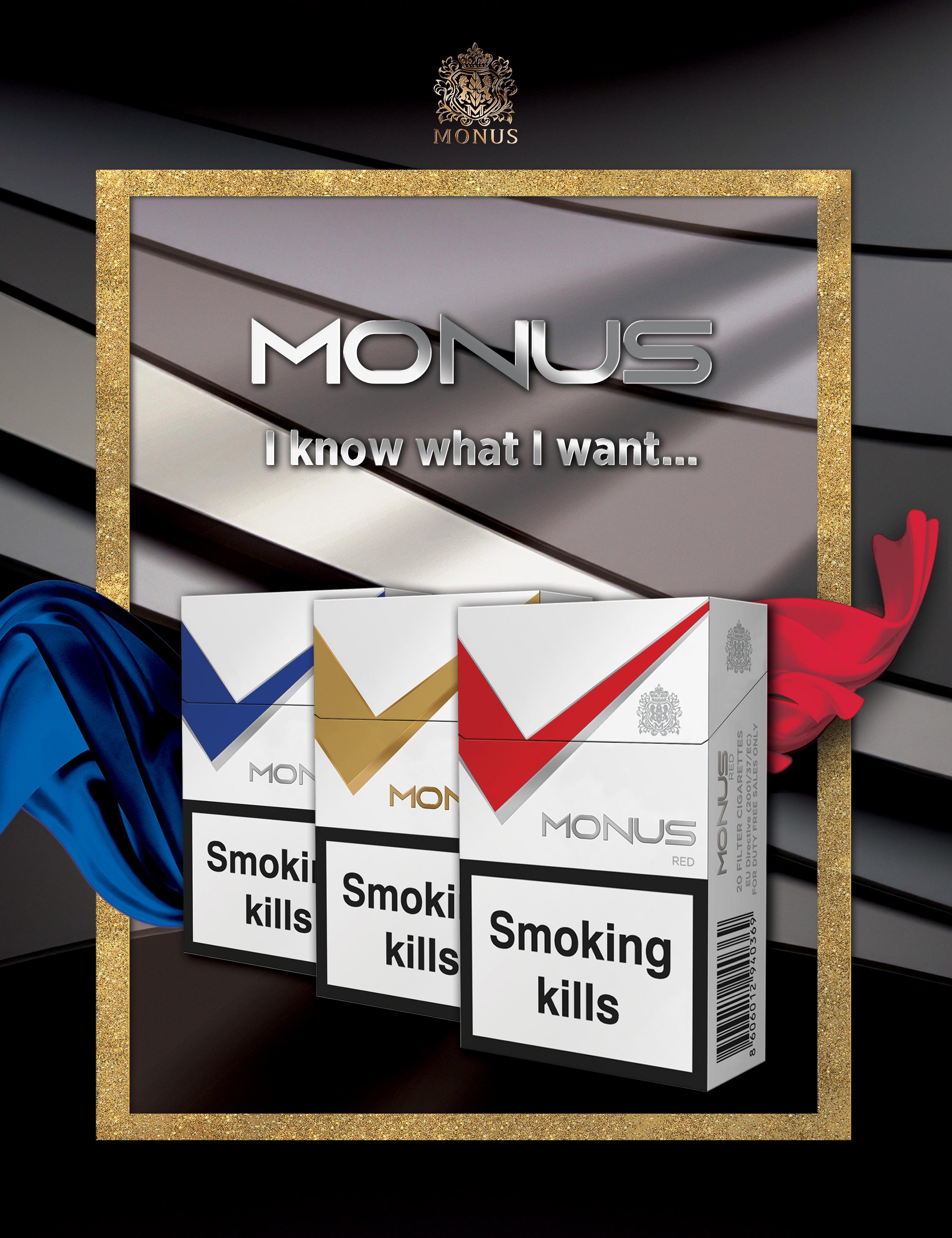
Oettinger Davidoff’s “Crop to Shop” philosophy ensures full control from tobacco cultivation to finished product
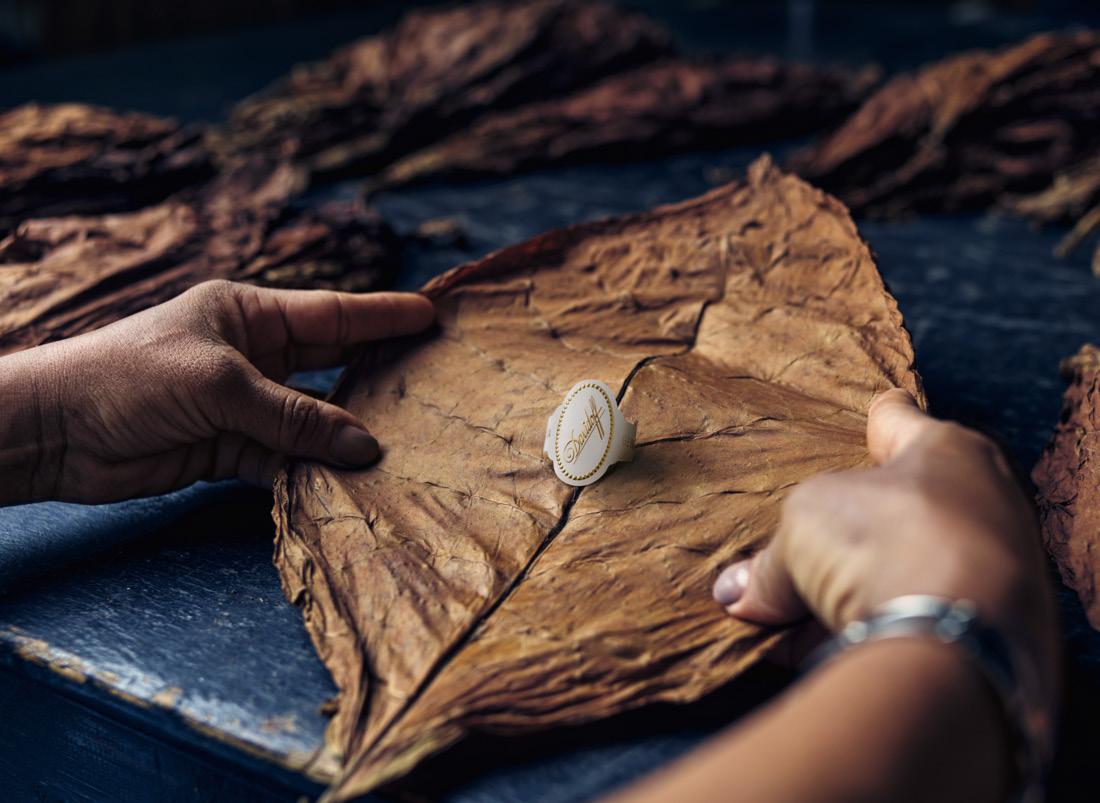
As Oettinger Davidoff AG enters its 150th anniversary year in 2025, Jean-Christophe Hollay, Head of Partner Markets & Duty Free EMEA & Americas reflects on the cigar house’s legacy and outlines how the company is advancing its next chapter across travel retail and beyond
by ATOOSA RYANNE ARFA
Since Max Oettinger founded the company in Basel, Switzerland in 1875, Oettinger Davidoff has grown from a local tobacco merchant into a global leader in premium handmade cigars. During this milestone year, the company is honoring its heritage while sharpening its focus on premiumization and reinforcing its “Crop to Shop” philosophy.
Lighting the way
Jean-Christophe Hollay, Head of Partner Markets & Duty Free EMEA & Americas, Oettinger Davidoff, takes pride in the company's leadership in the premium cigar category and how the brand uses data to drive decisions.
“We pursue an understanding of our shopper lifestyle preferences and use decision-making trees linked to product attributes,” he says. “These can vary significantly from one shopper profile to the next.”

The company conducts extensive research into cigar shoppers, building a nuanced understanding of motivations, expectations and behaviors. “This knowledge has enabled us to create a merchandising strategy that guides how cigars are displayed to drive footfall, increase conversion and grow basket size,” says Hollay.
These insights inform an ongoing consumer research program that defines four distinct shopper profiles, offering a nuanced view of lifestyle preferences and purchasing behavior. This understanding guides the design of in-store experiences and retail activations. A key example is the immersive humidor at Adolfo Suárez Madrid-Barajas Airport, created in partnership with Avolta. The installation enhances product visibility and positions cigars within the airport’s wider luxury retail environment.
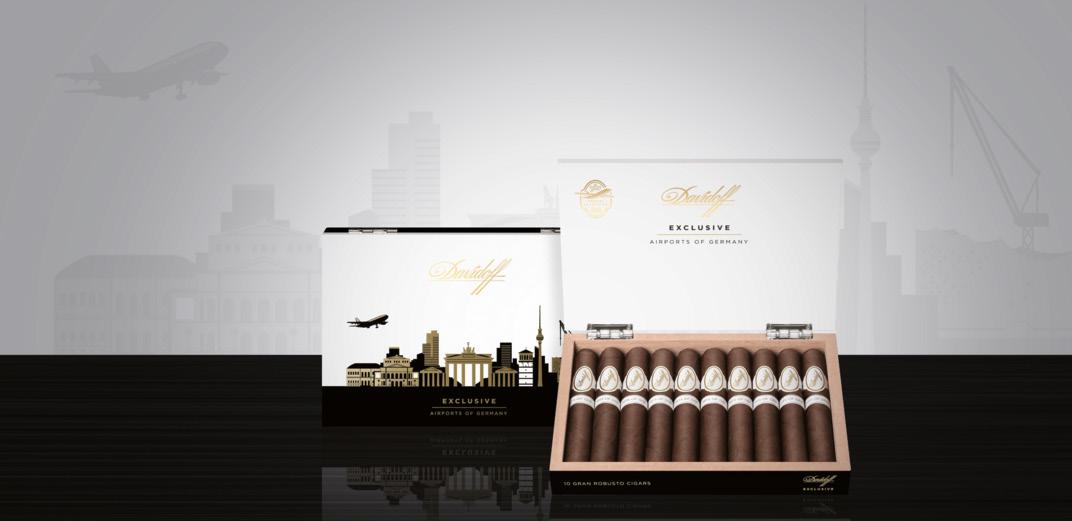
Building on this foundation, Oettinger Davidoff continues to grow its global retail presence. In June, the company opened a “Davidoff of Geneva since 1911” boutique at Lima’s Jorge Chávez International Airport, making it the first concept store of its kind in a Latin American airport. Beyond travel retail, the company is expanding across additional key markets. Renovations are underway at flagship locations on Madison Avenue in New York and in Monaco, while the “Davidoff of Geneva since 1911” store in Basel recently reopened with a refreshed interior. The company also introduced the Davidoff Exclusive 150 Years cigar, a commemorative release available in its Swiss retail stores.
According to Hollay, gifting drives nearly half of all cigar sales in travel retail. Rather than treating gifting as a seasonal push, Oettinger Davidoff approaches it as a year-round priority, developing limited editions tailored to specific markets and designing packaging that evokes a strong sense of place and occasion, especially during this historic anniversary year.
The brand’s recent launches reinforce this overall strategy. It recently rolled out market-specific editions for Spain and Germany, expanded the Zino Nicaragua line with five-cigar cartons and pre-cut formats, and introduced the Davidoff Escurio tenth anniversary, featuring a blend of Brazilian and Dominican tobaccos with a combined
Hollay highlights the brand’s premium positioning around gifting. “Cigars are luxury, not commodity tobacco,” he explains. “Shoppers expect quality, presentation and service.” This elevated expectation directly influences conversion, as indicated in Oettinger Davidoff’s research that shows a clear link between a shopper’s first cigar purchase and their broader premium spend. Missing that initial cigar sale often pulls down performance of other luxury categories.
Hollay notes that internal data confirms that excellent service significantly boosts purchase rates. To respond, the company launched Davidoff Academy, a dedicated e-learning platform for retail partners that delivers this training at scale. “The methodology enhances the knowledge, and thus ultimately the effectiveness, of our Brand Ambassadors and retail staff responsible to deliver service excellence,” says Hollay.
Crop to shop
Oettinger Davidoff’s roots in tobacco cultivation has naturally embedded sustainable practices into its operations since its beginnings. Its “Crop to Shop” philosophy anchors the entire business, giving the company full control over the value chain and ensuring consistency, traceability and long-term quality. “Excellence in craftsmanship and in the components we use make our products special,” says Hollay.
In line with the 150-year milestone, the company continues to invest in its production infrastructure. The company recently opened a new production facility in the Dominican Republic and plans to expand fermentation and storage operations in Danlí, Honduras by late 2025.
The company also invests in the wellbeing of the more than 4,000 people who make its premium products possible. In its production regions, Oettinger Davidoff provides generous social benefits, including free Englishlanguage education for employees’ children. “We grant them with social and health benefits going far beyond the local standards,” says Hollay.
As the brand celebrates 150 years of heritage and looks towards another century-plus of excellence, Hollay emphasizes that integrity, authenticity and a passion for quality remain non-negotiables. “As a luxury brand, it is critical to convey heritage and modernity in equal measure,” he concludes.
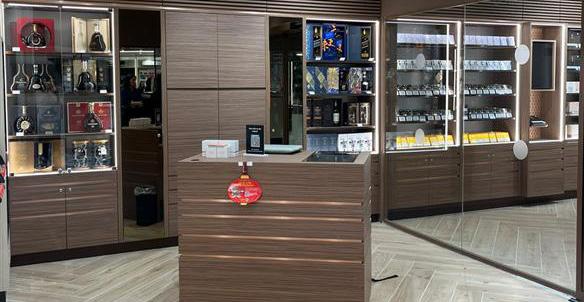

Mazaya’s Head of Travel Retail Rawan Elayyan discusses plans to amplify the shisha company’s differentiation through curated activations and exclusive product offerings, while detailing her vision for building lasting consumer connections and establishing Mazaya as a category leader by
WENDY MORLEY
Mazaya’s travel retail division is charting an ambitious course for expansion, building on its position as a top-three global shisha molasses brand with over 150 flavors and a growing footprint across major international airports and border stores. Since its launch in 2010, the brand has established itself as a premium player in the channel through strategic market expansion and innovative product offerings. Its aggressive post-pandemic
growth marked by new listings in Riyadh, Casablanca, Greece, Turkey and India has driven significant revenue gains, according to industry reports.
Head of Travel Retail Rawan Elayyan succinctly describes her vision for Mazaya as, “To expand Mazaya’s presence in the travel retail channel by offering a distinctive experience that blends innovation and premium quality at every touchpoint while building lasting connections with consumers and establishing Mazaya as the category leader.”

Elayyan’s leadership approach balances current operational needs with longterm market positioning as Mazaya continues its global expansion across multiple regions and channels.
“My immediate priorities will be to strengthen partnerships with key travel retail operators, enhance Mazaya’s brand visibility across strategic locations and tailor our product offering to meet the evolving preferences of international travelers,” she explains. “All while laying the groundwork for sustainable and long-term growth.”
The brand’s differentiation strategy emphasizes its premium positioning
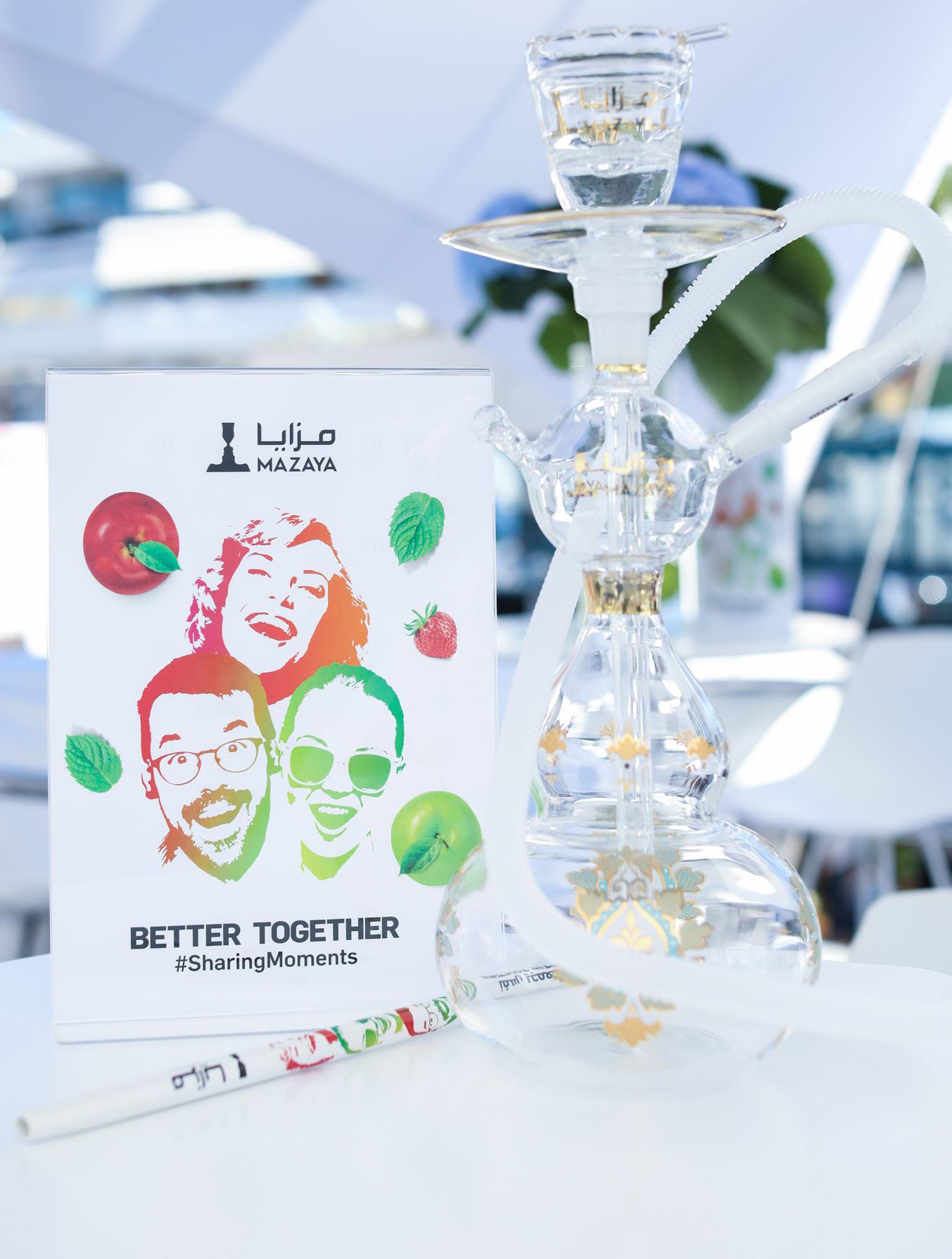
and diverse flavor portfolio. Mazaya has built its reputation on contemporary brand imaging and innovative products, with flavor innovations including Two Apples Masri, Love and Pan Raas, alongside the successful Caviar Drops flavor booster line that continues to drive gift-with-purchase campaigns.
She explains, “I plan to amplify our differentiation in the travel retail channel through a multi-faceted approach, by highlighting Mazaya’s premium quality, contemporary brand image and diverse flavor portfolio.”
The strategy includes what she describes as “curated brand activations that speak to modern consumer lifestyles,” “standout in-store visibility that captures attention in high-traffic
Mazaya’s premium positioning and contemporary brand imaging drives consumer engagement across key travel retail locations, supporting the brand’s global expansion strategy
zones,” and “exclusive product offerings tailored specifically for the travel retail audience.”
“Our goal is to not only engage global travelers but to elevate the perception of the shisha category within this dynamic retail space,” she notes.
Understanding consumer preferences remains central to Mazaya’s strategy as the brand expands regionally. Elayyan emphasizes the importance of datadriven decision making and trend monitoring to maintain Mazaya’s competitive edge.
“Prioritizing ongoing market research, close monitoring of travel retail dynamics and active engage-
ment with consumers through brand ambassadors,” she lists as her areas of concentration to stay ahead of the curve. “Leveraging data insights and collaborating with trendsetters in lifestyle and flavor innovation will enable us to anticipate and quickly respond to evolving preferences, ensuring Mazaya remains relevant and desirable.”
The brand’s innovation pipeline includes plans for what Elayyan describes as “exclusive traveler-focused product lines and immersive in-store experiences that engage multiple senses.” However, she acknowledges the regulatory complexities facing tobacco companies in implementing digital marketing strategies.
“While leveraging digital technologies for personalized marketing and seamless omnichannel integration is an important part of our vision, we recognize that, as a tobacco company, regulatory restrictions may require this to be a longer-term, carefully phased strategy,” she says.
Elayyan's leadership philosophy centers on building teams that can quickly navigate the complexities of international markets while maintaining focus on consumer needs and brand excellence.
“I plan to cultivate a high-performing team by fostering a culture of agility, collaboration and accountability,” she explains. "Empowering team members to think creatively and stay consumerfocused in a fast-paced environment.”
“Continuous learning, open communication, and clear alignment on goals will be key to ensuring we not only adapt to the ever-changing travel retail landscape but lead within it,” she adds.
Beyond immediate operational priorities, Elayyan’s strategic vision encompasses broader market expansion opportunities. The brand has demonstrated particular strength in its giftwith-purchase campaigns and premium product positioning, elements that have contributed to its recognition as a leading player in the global shisha category.

JTI’s next-generation heated tobacco device Ploom AURA launches exclusively in Japan travel retail, marking the global introduction of the product in the channel
by WENDY MORLEY

TI has launched its next-generation heated tobacco device, Ploom AURA, exclusively in Japan travel retail, marking the global introduction of the product in the travel retail channel.
The launch across seven Japanese airports and Lotte Ginza’s downtown duty free store represents a significant expansion of JTI’s heated tobacco portfolio in the travel retail space. Consumer research conducted prior to the launch showed Ploom AURA received the highest ratings across multiple image attributes, including perceptions of being more modern, advanced, unique, high quality and premium.
“Built on Ploom’s core design and DNA, Ploom AURA offers our best experience yet in the heated tobacco space,” says Claudio Ferreira, Global Travel Retail General Manager, JTI.
The device maintains the organic shapes and unique connector that have characterized the Ploom evolution while introducing a slimmer profile and what the company describes as enhanced tobacco taste.
The technological advancement centers on SMART HEATFLOW heating technology, which JTI says delivers sensory satisfaction while allowing consumers to experience tobacco’s full essence without combustion and smoke. A new Heat Select System offers four customizable modes, supported by Bluetooth connectivity, though this feature is currently available only to Japanese residents purchasing in Japan travel retail.

Ferreira, Global Travel Retail General Manager, JTI
The product rollout spans Tokyo Haneda, Narita, Kansai, Chubu, Fukuoka, Naha and Shin-Chitose airports, alongside the Lotte Ginza location. Each activation site enables visitors to explore the full range of Ploom AURA devices and heated tobacco sticks, select preferred combinations and customize devices with personalized prints.
“The Ploom AURA activation in Japan travel retail underscores our long-
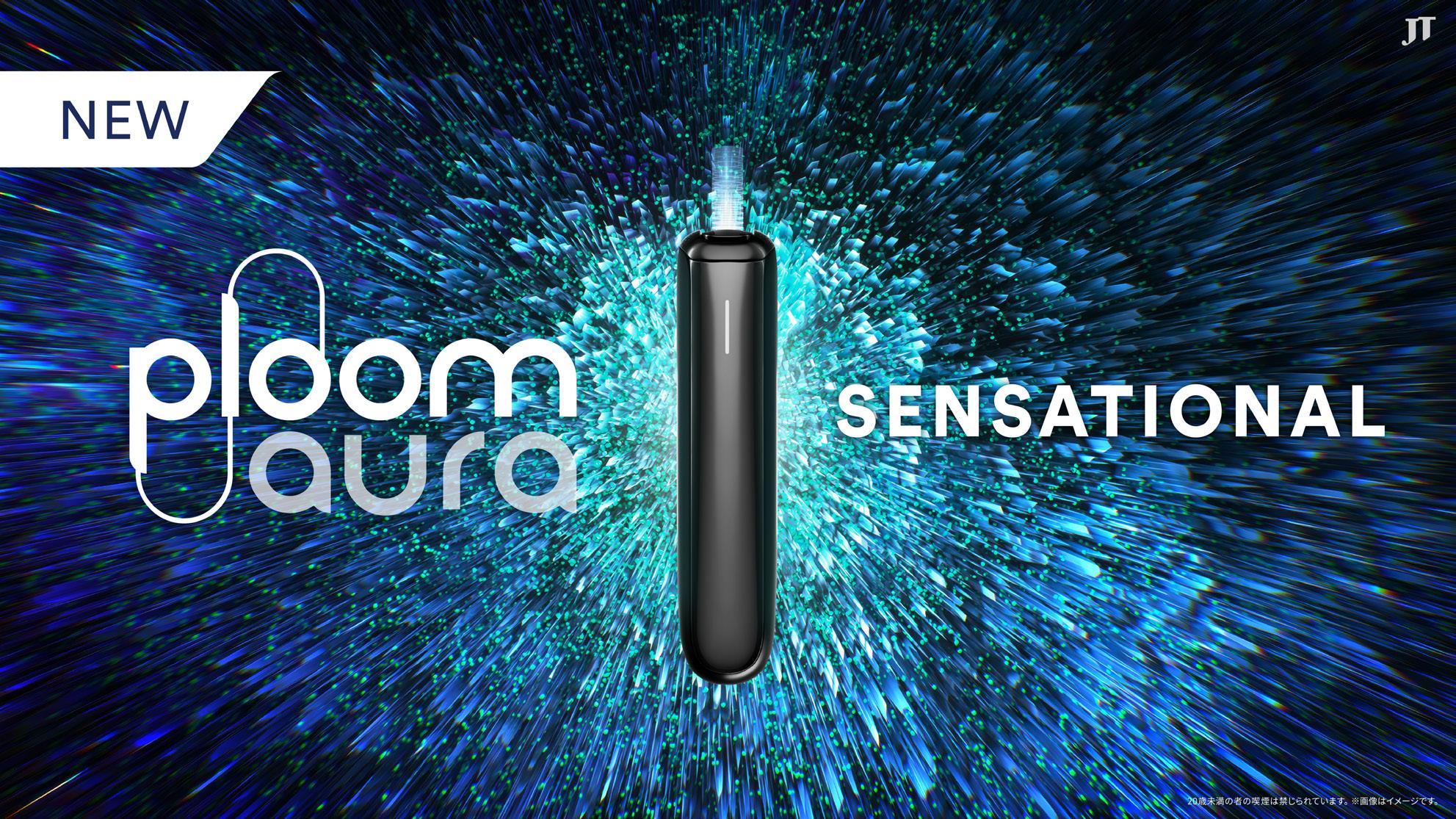
term commitment to being amongst the leaders in the HTS segment – not just in Japan, but globally,” Ferreira says. The company has positioned the launch as part of what it describes as “proactive, bold and dynamic brand experiences coupled with innovative and current, consumer-centric propositions.”
The airport activations feature dedicated Ploom lounges where travelers can experience the device alongside the diverse flavor lineup from Mevius and Camel heated tobacco sticks. Available flavors include tobacco regular, menthol, berry, citrus and pear variants. These lounges are designed to provide what JTI describes as a serene and comfortable space for travelers during their airport journey.
Trained Ploom ambassadors are stationed at each location to offer free trials, provide product information and assist with purchases at duty free shops. The comprehensive activation approach also includes state-of-the-art digital interactive visuals and touchpoints positioned throughout the airports, a dedicated
Ploom flagship store and pop-up promotional zones.
JTI’s strategy reflects the evolving consumer landscape in travel retail, where demand for quality, innovative and reduced-risk products continues to grow. The heated tobacco sticks segment has gained significant traction, with Ploom positioned as a rapidly expanding brand within JTI’s portfolio.
The device’s ergonomic curved design aims to ensure comfortable handling while maintaining the delicate and organic curves characteristic of the Ploom brand. The evolution into a compact and slim design combines what JTI describes as elegance and practicality, addressing consumer preferences for both aesthetic appeal and functional performance.
“Ploom AURA stands out through JTI’s unwavering focus on the consumer, and our commitment to driving success for our retail and airport partners, which remain at the heart of our longterm vision for the RRP category,” Ferreira says.
The Japan travel retail launch serves as a testing ground for potential broader international expansion, though JTI has not specified timelines for additional market introductions. The company is preparing to launch the Ploom CLUB online shop specifically for Japan travel retail, adding another dimension to the consumer engagement strategy.
The activation represents JTI’s broader commitment to the reducedrisk product category, with heated tobacco positioned as a key growth driver within the travel retail channel. The comprehensive approach combines product innovation, experiential marketing and digital integration to create what the company views as a differentiated offering in the competitive heated tobacco landscape.
Airport retail partnerships remain central to JTI’s travel retail strategy, with the Ploom AURA launch demonstrating the company’s focus on creating engaging brand experiences that support both consumer satisfaction and retail partner success.

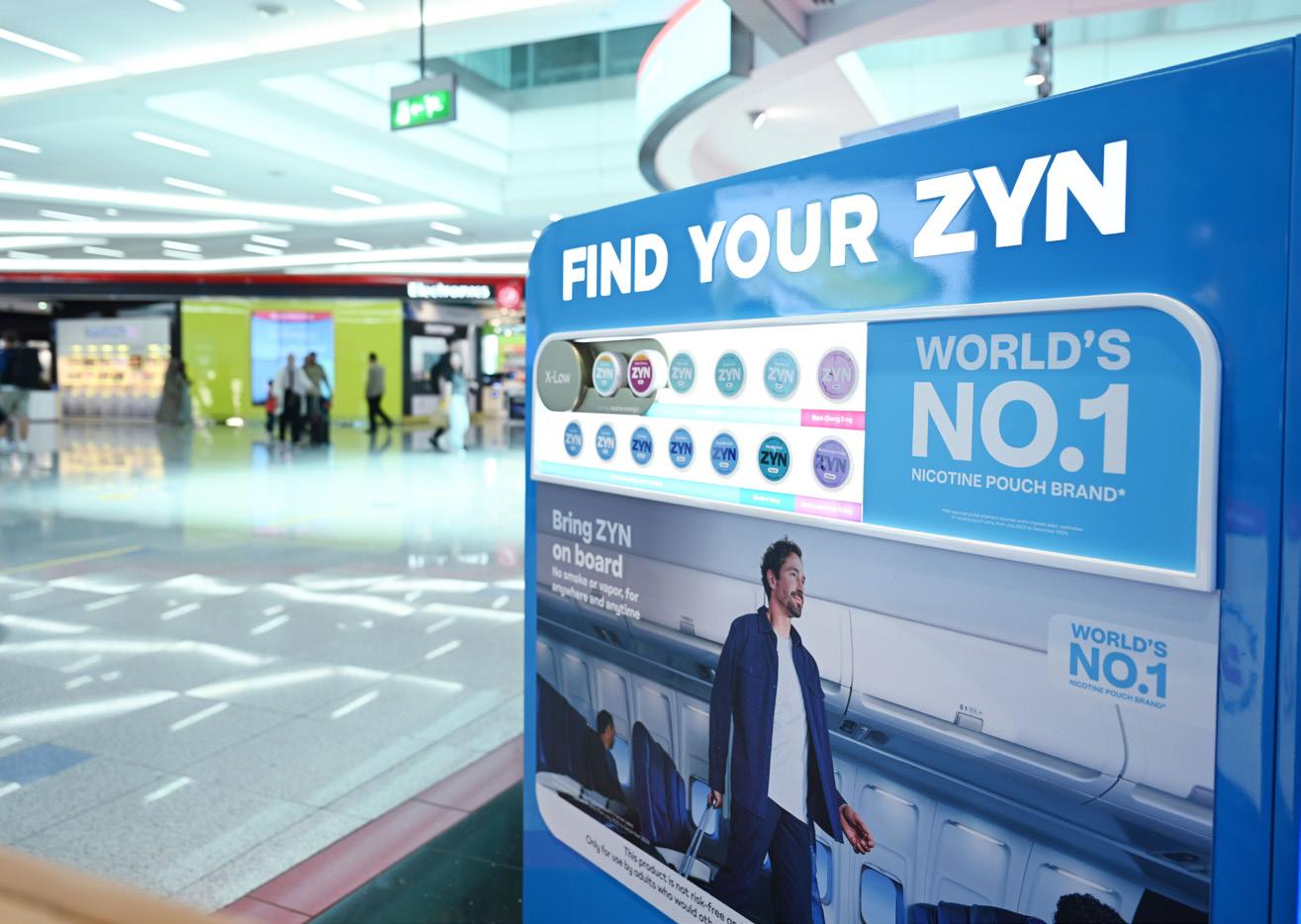
Philip Morris International is on a mission to accelerate the end of smoking. The new ZYN portfolio at Dubai International Airport is a “momentous step” in PMI GTR’s smoke-free journey
by HIBAH NOOR
Philip Morris International Global Travel Retail (PMI GTR) has introduced revamped ZYN nicotine pouches at one of the world’s major travel hubs, Dubai International Airport (DXB).
Launched at the end of June at DXB, the new ZYN portfolio is said to signify a momentous step in PMI GTR’s smokefree journey.
“As a key driver of PMI’s smokefree transformation, PMI Global Travel Retail continues to champion PMI’s smoke-free portfolio with retail excellence across the globe. Together with our partners, we are accelerating positive social change and the shift toward better smoke-free alternatives.

ZYN is a testament to our commitment of providing legal age nicotine users a diverse portfolio that caters to their evolving preferences,” comments Beste Ermaner, Vice President at PMI Global Travel Retail.
According to Ermaner, PMI’s ambition is to generate more than two-thirds of its net revenue from smoke-free products by 2030. “ZYN is already contributing significantly to this effort and supports PMI’s ambition to accelerate the end of smoking. “ZYN is the number one nicotine pouch brand worldwide, currently available in over 35 markets globally and in 24 global travel retail locations. As a pioneer and leader in the category, the revamped ZYN portfolio, including the new 1.5-mil-
ligram nicotine pouches, reflects PMI’s strategy to address the unmet needs of legal age smokers seeking smoke-free alternatives that are free of tobacco leaf,” she explains.
With the release of the revamped nicotine pouches, PMI GTR has unveiled a new ZYN promotional zone at DXB. This dedicated space showcases the latest ZYN design and new product range, guiding legal age nicotine users with tailored information on the category, brand, and product understanding. As noted in the release, the zone boosts ZYN’s brand visibility and presence in one of the world’s busiest airports, offering an engaging brand experience for legal age smoker travelers.
“With the opening of new ZYN pro-
FIND YOUR ZYN activation at Dubai International Airport; this promotional zone boosts ZYN’s brand visibility and presence in one of the world’s busiest airports
motional zone, PMI GTR continues to strengthen ZYN’s leading position as the world’s number one nicotine pouch brand and to deliver premium experiences in global travel retail,” adds Ermaner.
ZYN offers a flight-friendly nicotine delivery option, which is used orally by placing a pouch between the gum and the lip. Notably, it produces no smoke, vapor, or smell and releases 99% less harmful chemicals compared to cigarettes. As shared by the brand, each pouch is crafted with high-quality nicotine and food-grade ingredients and contains no tobacco leaf. At Dubai Duty Free, ZYN is available in two sizes (mini and regular), plus various flavors (Cool Mint, Spearmint, Menthol, Black Cherry, Blackcurrant and Coffee), and nicotine strengths.

Middle East-based ANDS – a specialist in alternative nicotine delivery systems – is diversifying its offer to mirror the growing demand in alternative nicotine products

by HIBAH NOOR
Middle East-based ANDS is determined to stay ahead of the curve in the growing market for alternative nicotine delivery systems.
Considering new product categories or formats in 2025/2026, the company’s Managing Director MEA & Global Travel Retail Arnaud Piorkowski says the nicotine category is evolving fast. “There are new emerging trends, and consumers are looking for more choices, and new alternatives.
“Travel retail is a place where
consumers are willing to explore. We are permanently adapting to these new waves.”
According to Piorkowski, ANDS has increased its range of vapes with different nicotine deliveries including a zero nicotine proposition, while proposing a wider range of options in terms of puff count.
“For the past years ANDS has been positioned as the destination platform for Vape products,” he explains. “Lately we enhanced our portfolio with Pouches and Heat Not Burn. We have now a
ANDS promises a hassle-free experience as its new products attract the attention of today’s consumers

more diversified portfolio, with a presence in different categories mirroring the growing demand in alternative nicotine products.”
Piorkowski is confident that during the 2025-2026 period, ANDS will establish its multi-category portfolio to complement its vape offer. “With more than 100 touch points across the globe currently, we will obviously continue to grow our geographical expansion through global and local partnerships,” he adds.
Piorkowski notes that nicotine
pouches rates as the new trend across the globe, with the travel retail channel one of the key platforms to accelerate awareness globally. “Along with conventional nicotine pouches, we are now launching Zero Nicotine pouches, and Energy pouches. These initiatives are very much aligned with our vision around harm reduction and our ambition to lead by innovation. Consumers are evolving, we need to adapt,” he says.
Piorkowski underlines ANDS’ commercial priorities in travel retail this year. “With a vision to creating a better
life for adult smokers, it is our role to be present in the various nicotine alternative categories, being able to answer the demand of any adult nicotine user,” he says.
ANDS’ aim is to continue being a “one stop shop” for operators, offering brands and products that “resonate in the mind of the consumers”.
Piorkowski says ANDS will continue to invest in brand staging whilst increasing its focus on consumer information through a team of alternative nicotine ambassadors at point of sales.
With regulation and consumer expectations evolving fast, he predicts continued growth in the alternative nicotine category, leading to more products and more brands. “This will obviously have consequences on the operator’s assortment, and the dedicated retail space of the category,” he says.
“Reduced risk products will continue to grow, and the category will become more innovative, more educational, and potentially even sensorial.”
Piorkowski notes how ANDS has implemented ANDS alternative nicotine experience corners in some airports, where consumers can find and try different brands in a designated ANDS nicotine room. “This helps the consumer to explore the range and make wise decisions guided by our alternative nicotine ambassadors,” he says.
“Slowly but surely, we are moving towards a retail space and executional transformation which obviously will always reflect regulation restrictions.”
He also points out how ANDS continues to contribute to the responsible debate around harm reduction. He emphasizes the importance of alternatives, and “how crucial it is to perform business while protecting vulnerable groups like minors and ex-smokers.”
“Our portfolio and actions are mirroring these trends,” Piorkowski concludes.

A three-day KTI Distributor Conference in Plovdiv, Bulgaria, underlined the company’s vision and strategic plans, with a focus on further development and expansion
by HIBAH NOOR

With a “Growing Together” theme, independent tobacco manufacturer KT International SA (KTI), hosted the KTI Distributor Conference at its headquarters in Plovdiv, Bulgaria, June 25-27.
The event welcomed 50 distributor partners from over 30 countries, reinforcing KTI’s position as one of the fastest-growing tobacco companies, with operations in 70 markets across four continents.
With an international guest list spanning Europe, Central Asia, the Caucasus, the Middle East, and East Asia, the conference underscored
KTI’s global reach and its dedication to fostering long-term partnerships. Countries represented included France, Spain, Portugal, Germany, Italy, the UK, Greece, Switzerland, Austria, Hungary, Lithuania, Bulgaria, Romania, Albania, Slovenia, Croatia, Montenegro, Moldova, Czech Republic, Turkey, Georgia, Uzbekistan, Mongolia, Azerbaijan, Jordan, China, Cambodia, Mauritius, and Andorra, along with guests from Gibraltar and the Canary Islands.
The three-day event offered participants a deep dive into KTI’s world-class operations through a full visit to the company’s headquarters and production facility. Guests engaged in strate-

OVER 20,000 YEARS IN THE MAKING. WE ARE CANADA’S VODKA.

gic discussions, experienced product innovation workshops, and participated in technical sessions with KTI’s expert blending and development teams.
Stuart Buchanan, Chief Commercial Officer, KTI SA, highlighted KTI’ s global scale and competitiveness, underlining its position as a “global player with proven quality, market sustainability and long-term commitment to partnerships”.
“This potential is confirmed by the fact that KT International is present in over 70 markets on four continents, in direct competition with global brands and manufacturers,” he said.
Buchanan explains how KTI encourages networking and dialogue, and an open exchange of ideas for the future development of the company within a moderated environment.
“Founded on innovation, quality, and international collaboration, KT International continues to build a global business with proudly Bulgarian roots, remaining agile, independent, and
focused on long-term value,” he adds.
“The ‘Growing Together’ conference marked another milestone in the company’s mission to exceed expectations while building a more sustainable and connected future with its partners worldwide”.
In line with its ESG (Environmental, Social, and Governance) commitments, KTI planted 50 trees — one for each of the participating companies — during the ‘Growing Together’ event. Birch and Sycamore trees were planted around the KTI headquarters, while an Olive tree
– a symbol of endurance and longevity – at the front of the office building was watered by all participants.
The conference agenda included time to showcase Plovdiv as a world-class tourist destination, with invited guests enjoying a tour of the Old Town which culminated in a Gala Dinner. Conference participants received gold-plated KTI Gold Partner medals, along with a treat from a Plovdiv-based chocolatier in line with KTI’s aim to support local enterprises.



Growing a wider portfolio of GTR exclusives is a key focus for Suntory Global Spirits. Managing Director Global Travel Retail Ashish Gandham tells Global Travel Retail Magazine the innovation spotlight will shine on building global brand offers from House of Suntory, Bowmore and Maker’s Mark for discerning travelers to discover
by ALISON FARRINGTON
Suntory Global Spirits has plenty of rich brand narratives within its portfolio when it comes to telling heritage stories in the GTR channel.
“One of our biggest priorities, and especially important because we are a Japanese company, is our Japanese whiskey portfolio, The House of Suntory. Within that, we really want to build the Hibiki brand,” explains Managing Director Global Travel Retail Ashish Gandham. While the Hibiki name has had “tremendous traction” over the
years, Gandham says the next challenge is taking it out to the world. Asia Pacific (APAC) markets are a particular focus, including Singapore’s Changi Airport, which serves as an important gateway.
Meanwhile, another portfolio “icon” set for market expansion is Bowmore. The Scottish single malt’s value credentials in the APAC region position it as a powerhouse for growth. “The Asian consumer likes to have a liquid that is accessible,” says Gandham. “Age has always been important across Asia. When consumers evaluate product

quality, they look at the aged statement. As an industry, we’ve tried to talk about flavor-based product profiles, but our Bowmore aged expressions have received positive feedback from the market [in India].”
The Super Premium American whiskey category also needs attention, according to Gandham. For Maker’s Mark the coming years will be about investment in key markets, “where we would love to create an American whiskey renaissance,” he says.


Travel retail exclusives are a “must have,” especially given ongoing price pressures and consumers looking for the right price, says Gandham. “As soon as you give travelers an exclusive, suddenly that is great value. It gets them thinking about price benchmarks between domestic and travel retail.”
From launching an entire Bowmore range that is travel retail exclusive to expanding its Japanese whiskey
offer with the Hibiki Harmony Master’s Select, Gandham says Suntory is constantly looking to innovate for the channel.
The Kogei Collection of single malt whiskies – The Hakushu and The Yamazaki – was launched to tap into the power of exclusives. Meanwhile, significant development is planned for Maker’s Mark, he adds.
“Looking at our pipeline for the next three years, the challenge is how we
Maker’s Mark Bourbon Wood Finishing Series can be seen here at Changi Airport, an important gateway for the category
can continue to innovate with relevant stories – innovation for its own sake will not be sufficient,” he says. “It will come down to the importance of aged products and how each brand can offer credible stories that are exclusive to different markets.”
Market dynamics:
China versus India
China and India are global priorities for Suntory. “Both these markets are what we call icon markets. China started the journey slightly earlier and as a market it’s rapidly developing. Single malts are growing at an unprecedented scale there,” says Gandham. “We’ve seen that with Hainan and we’ve seen that with other airports in China; it’s a developing story,” he adds.
Meanwhile the trajectory in India, especially post-COVID, is faster for Suntory’s key GTR brands. “The Indian traveler is becoming more and more prominent,” he says. “They are traveling in greater numbers and they’re spending more than they used to. They are looking to explore new brands.”
“When it comes to whiskey, single malt is now equal to blended scotch, and that’s a fundamental shift from where India used to be,” says Gandham.
It’s a pan-regional shift, he notes. “In Southeast Asia or the Middle East, the Indian traveler is starting to contribute more and more to the overall category. The biggest pivot is premiumization in the right way. It’s not simply about pricing; it’s about looking for products that were previously not accessible or that they haven’t tried before.”
India is the market to watch, from the demand for single malts to this demographic’s growing desire for choice. “It’s right up there in terms of the transformation we are seeing in the market,” says Gandham.

Global Drinks Ltd’s multi-brand strategy is paying dividends across Asia Pacific travel retail, with MISAKA whiskey leading the charge alongside expanding partnerships, supply chain growth, and a diverse premium spirits portfolio targeting India’s surging demand through both airport and border retail channels
by ALISON FARRINGTON
One year after launching at TFWA Asia Pacific in Singapore, MISAKA whiskey, which is codeveloped by Global Drinks Ltd (GDL) and Japanese master distillers, continues to gain momentum across Asia Pacific travel retail.
MISAKA’s launch is being spearheaded by GDL Managing Director Harry Kartasis, who describes the whiskey as a fusion of 700 years of Scottish whiskey-making and 100 years of Japanese whiskey craftsmanship. The brand
is inspired by the Misaka Mountain range in Japan, known for its pristine water and rare Mizunara oak, which are integral to the whiskey’s flavor profile.
The brand has carved a strong niche in Asia’s duty free and border store markets, according to Kartasis. “A year on, we’re about where we expected to be, especially considering the challenging market,” he says. “We’ve recently launched in Macau Airport and are now present in Hong Kong, Seoul, Changi in Singapore, Australia and New Zealand.
India, however, is our primary whiskey market – we’re in Delhi and Hyderabad, with Mumbai coming soon.”
MISAKA’s first-year strategy focused on airports and border outlets, with notable success in the latter category.
“We’ve seen strong results from the border store segment, especially ferry terminals,” Kartasis says. “In Hong Kong, Avolta operates key border shops for the high-speed rail link to Guangzhou, which is a huge channel. Being based in Hong Kong, it’s also logistically efficient.” MISAKA is the company’s own brand, but it complements its portfolio of agency brands well, according to Kartasis.
While airports remain GDL’s core business in Asia, the company is actively expanding its reach into border retail.
“Avolta was our first duty free customer in Hong Kong, and that relationship has been excellent,” says Kartasis.

Beyond MISAKA, GDL has grown its regional footprint through its supply chain business, which has scaled significantly since 2020. Originally sparked by warehouse changes during the pandemic, GDL now manages aggregated shipments to help smaller brands meet minimum order requirements more economically.
“We run a major supply chain operation for Lagardère Travel Retail, managing their spirits business in Hainan, Japan and Cambodia – and now their tobacco business, too,” Kartasis explains. “Hainan is the largest volume-wise. We’ve also started helping brands reach minimum order quantities by aggregating orders with partners like B&S in the
Middle East and through our expanding operations in India.”
Platinum Liquids partnership
GDL has teamed up with industry veteran Gaurov Joshi, the former head of Bacardi’s Global Travel Retail operations in India, to introduce a new wave of premium spirits to the Indian and Middle Eastern markets through his latest venture, Platinum Liquids. Platinum Liquids, already making a name for itself as a dynamic new spirits distributor, holds exclusive rights in India for MISAKA, alongside El Dorado, the acclaimed aged rum from Guyana, and Loca Loka, a bold new tequila backed by Indian celebrities
Rana Daggubati, Anirudh Ravichander and Harsha Vadlamud.
With a focus on heritage, craftsmanship and spirits market momentum, the partnership is well timed to ride India’s surge in demand for premium spirits. “We’re seeing phenomenal response from key travel retailers in Delhi, Hyderabad and Mumbai,” says Joshi.
El Dorado, a brand with over 300 years of distilling history, is expanding beyond its core markets in the Caribbean and North America. Known for its extensive aged range including 3, 5, 8, 12, 15, and 21-year expressions, the brand is now targeting expansion in Asia and the Middle East. Its 12-year expression is the top-selling SKU, while the 15-year variant is its most awarded.
Meanwhile, Loca Loka brings a fusion of Indian charisma and Mexican spirit to the tequila category. Made and bottled in Mexico from blue agave, the brand leans into a playful narrative: “If India and Mexico had a wild night, the result would be Loca Loka,” says Joshi. With eye-catching packaging and a mythical east-meets-west label featuring an Indian tiger and a sombrero-wearing bear, the brand has already secured listings at Singapore’s Changi Airport and is on the cusp of broader travel retail distribution across Asia.
MISAKA, meanwhile, taps into the booming interest in Japanese-style whiskey, leveraging its market-savvy branding to position itself as a longstanding staple, despite being new to shelves. “The name carries a sense of legacy,” Joshi says. “Sometimes I don’t even correct customers who assume it’s a heritage label.”
As premium rum, tequila and Japanese whiskey categories gather momentum globally, the GDL–Platinum Liquids partnership comes with the right products at the right time for both parties. With enthusiastic travel retailer support and expanding regional presence, the companies’ respective brand portfolios are well placed for growth in key traveler markets across India, Middle East and Asia.
The phrase “cautious optimism” has taken on a whole new meaning in recent months as people across the globe have been forced to grapple with unnerving circumstances on a day-to-day basis. Global Travel Retail Magazine talks with leading industry executives to learn more on the rising level of uncertainty that has entered the travel space
How do you expect geopolitical tensions and looming tariff uncertainty will affect consumer confidence to spend in travel retail?
Stuart Buchanan, Chief Commercial Officer, KT International
“As a category, tobacco is generally one of the more resilient categories to both recessionary economic conditions and geopolitical tensions. Considering our current domestic market footprint our exposure to the regions affected is limited. That being said, we believe consumers will become more sensitive to luxury spending which could trigger downtrading to more value propositions both in tobacco and other travel retail categories.
“As a company that operates across 70 countries, we have already noticed a disruption in supply chain efficiencies and lead times which could in time start affecting production costs. This is probably the biggest business impact at the moment. However, the biggest concern for us is not so much the consumer confidence and recessionary signals, but the humanitarian impact as tensions start spreading across more countries and regions.”


Marian Geoffroy, Head of Travel Retail, Champagne Lanson
“At Champagne Lanson, we recognize that ongoing geopolitical tensions and the uncertainty surrounding tariffs can create headwinds for international trade and consumer sentiment. However, we continue to see resilience in demand for premium products within the luxury sector.
“Our customers value heritage, quality and craftsmanship—factors that tend to endure even during periods of economic uncertainty. While we are mindful of potential cost pressures and regulatory changes in our key export markets, we remain committed to maintaining strong relationships with our global partners and ensuring our supply chain remains agile and responsive. Our long-term focus is on sustaining brand equity and delivering consistent excellence to our consumers around the world.”

Ziad
Jabre, Vice President – Global Travel Retail & Heritage Markets, Al Fakher
“Any type of uncertainty normally has a negative impact on consumer spending as people become uneasy and tend to reduce spending; so, when it comes to geopolitical tensions and tariffs this is no different. However, seeing as we are heading into the summer season where traffic normally increases, we feel that the price advantage of travel retail, especially on excised products, will make purchasing while traveling more attractive considering increased prices driven by tariffs.”

Eamon Prunty,
Global Travel Retail Director, Halewood Artisanal Spirits
“Geopolitical instability and the prospect of tariff changes undoubtedly contribute to a more cautious consumer and trading environment. At Halewood Artisanal Spirits, we are proactively managing these challenges through diversification across both product lines and markets. While we may see consumers becoming more selective with discretionary spending, we continue to experience strong interest in highquality, craft-led spirits that offer authenticity and value. Our strategy remains focused on agile supply chain management, innovation within our portfolio, and deeper engagement with local markets to ensure continued growth despite global uncertainties.”

Steve Ciccolini, President, Iceberg Vodka
“I think it already has… at least here in Canada. This is playing out through decreased volume at land border crossings and U.S.-Canada cross border airport traffic.
“A lot of people’s livelihoods are directly tied to the outcome of trade and tariff negotiations with the United States as our largest trading partner. When people are uncertain about their future employment, they tend to hoard their current income and store it for the proverbial ‘rainy day’ postponing discretionary spending and even trading down when it comes to essential purchases. Our team is certainly observing this in recent data.
“When consumers finally are making purchases, they are doubling down on their ‘buy local’ tendencies and are expressing their patriotism through their wallets. As a Canadianowned and operated company, we have been wrapping our portfolio of brands in the Canadian flag for years and the authenticity of our messaging is resonating well with Canadian consumers. There is now a flight to value and quality, and we have always strived to provide that.”
Thomas Gryson, Export Manager, Oliva Cigars
“Oliva focuses on quality and consistency, which helps in uncertain times. With global tensions rising and the chance of higher tariffs on cigars, we expect some pressure on the lower end of the market. Budget-conscious smokers may cut back if prices go up. But premium cigars are a different story. They’re luxury items, and most buyers in this segment are loyal and less sensitive to price changes. For brands like Oliva— known for cigars like the Serie V Melanio—demand should stay strong. People buy these cigars for the experience, not just the price. Even if the market slows at the entry level, the high-end segment is likely to remain stable.”

Luke Maga, Group Managing Director –Global Travel Retail, Loch Lomond Group
“It will certainly keep us on our toes, certainly there will be an impact within some regions that might not be seen safe to travel to or through due to specific conflicts, however this will also bring new opportunities in destinations that we had not considered allowing us further time to explore.
“Being fast to react to changes and not relying on one market or brand to deliver growth or opportunities will be the way we will approach the second half but also as we look longerterm into the future. We can’t get away from the fact that the world is a different place then one or five years ago, but we will remain optimistic and continue to search harder on growth opportunities within the channel.”

Alessandro Mutinelli, Chief Executive Officer, Italian Wine Brands
“In times of global instability, consumers often become more cautious with discretionary spending, potentially favoring more affordable or locally produced wines—especially if tariffs increase the cost of imports. However, these challenges also create important opportunities for agile and forward-thinking brands. This is a moment to lead—leveraging global reach, trend observatory, production versatility, and entrepreneurial spirit to drive innovation across product offerings, communication, and customer experience.
“Moreover, this climate can stimulate creativity in packaging, digital engagement, and direct-to-consumer strategies, allowing brands to forge stronger, more meaningful connections with consumers while reducing reliance on traditional distribution channels.
“In short, while macroeconomic uncertainty may reshape consumer behavior, it also opens new space for brands that know how to adapt, clearly communicate their value, and build lasting emotional resonance with their audiences.”










